The word Monterey conjures up images (and sounds) of music due to the renowned annual jazz festival that take place there. The 1967 Monterey Pop festival is said to have coined the phrase ‘The Summer of Love’, so it seemed an appropriate destination to head for after San Francisco. We arrived at Monterey Harbour early on the morning of 6th October to the now familiar and welcome sounds of barking sea lions. Paul’s oft-repeated assertion that it would get hotter the further south we go had never seemed to hold so true as we took our customary exploratory walk in new surroundings. The late morning sun’s heat had us shedding layers of clothing as we strolled along the boardwalk. The beach looked very inviting, with small groups of people swimming, sunbathing and surfing but it was the sound of live music coming from a nearby square that grabbed our attention. A cultural festival was taking place on a stage in the square, honouring a celebration of languages around the world. Food and souvenir stalls lined the sides and there was a great atmosphere from the audience enjoying performances from dancers and speakers representing the countries.
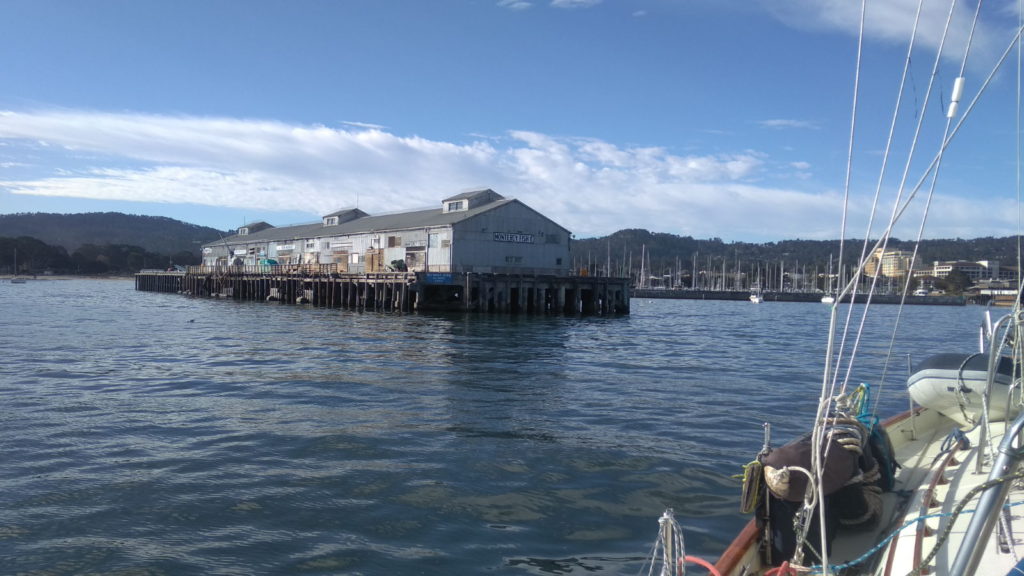
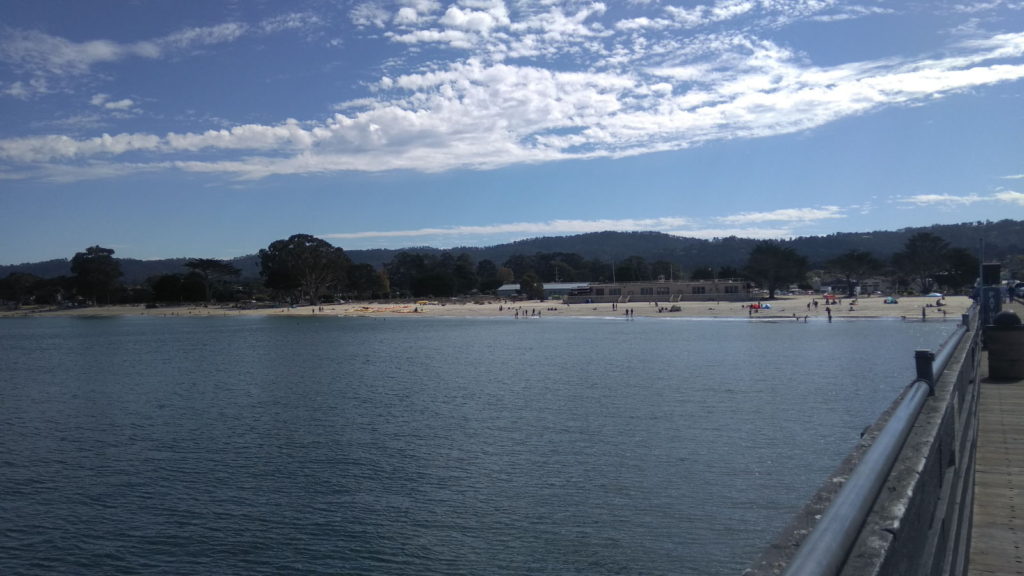
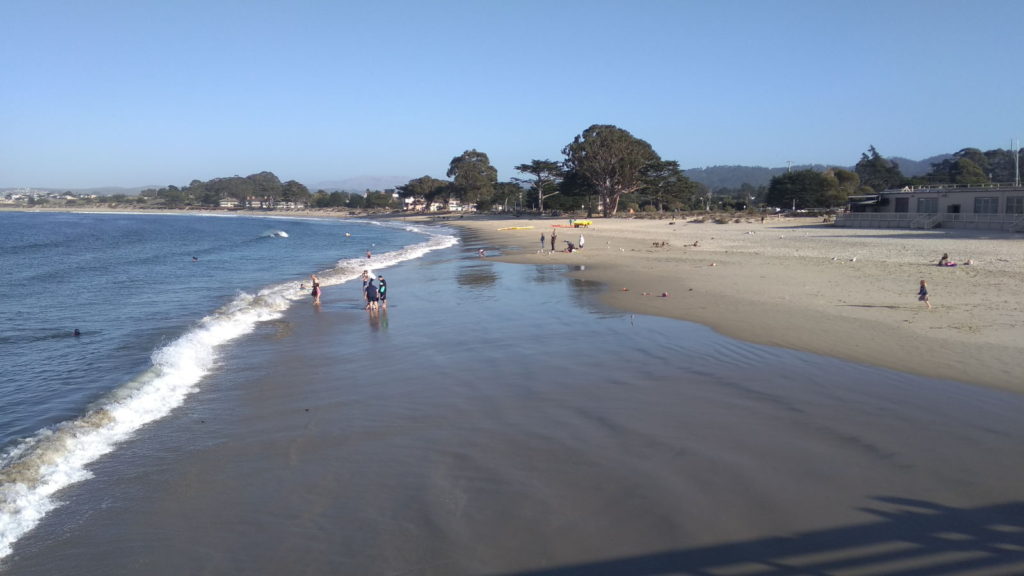
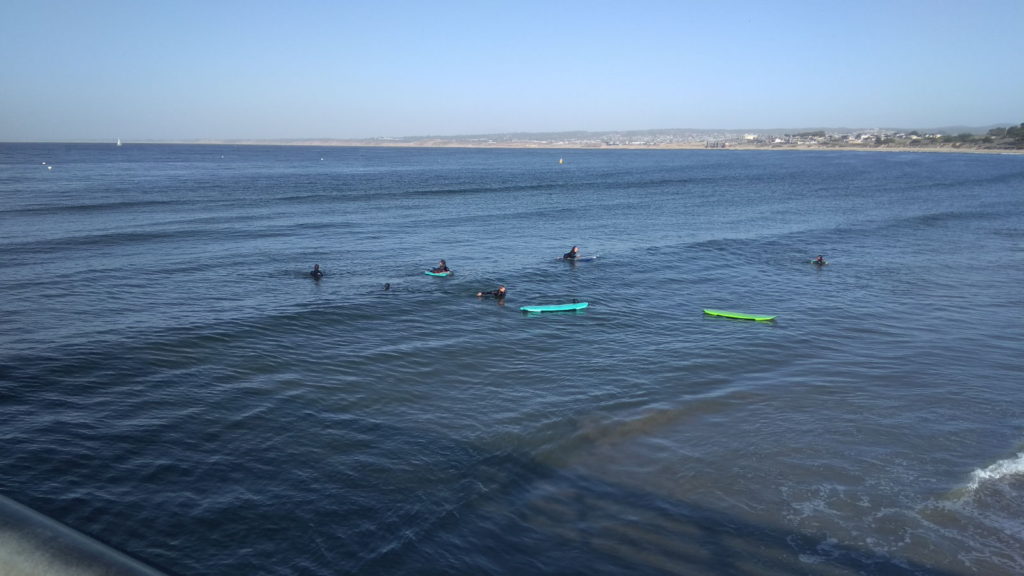
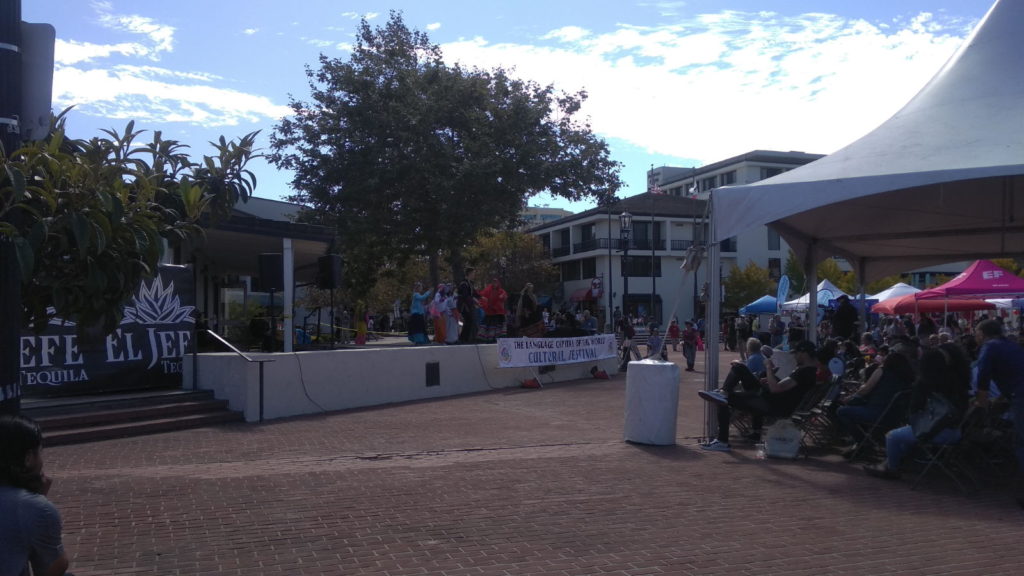
My initial impressions of the town made me think of Spain. The small centre had a decidedly Mediterranean feel, with its tree-lined Spanish named streets, Spanish-style architecture and pavement cafes. Monterey has a long history of Spanish (and later on, Mexican) settlement and was California’s capital under both rules until 1850. The coastal trail is a long attractive walkway spanning the length of the bay’s coastal curve. We walked only a small part of it, planning to walk the whole trail when we visited Cannery Row. The only drawback was the profusion of cyclists using the same path and ringing bells to urge you out of their way. I found it safest to stick close to the edge and stay there in order to avoid collisions. The rocky shore is populated with a rich variety of marine life and the water was clear enough to see seals, sea lions and birds when they dived and swam under the surface. We stood for ages looking at them, and at the grand views behind us of old canning factories and the colourful Fisherman’s Wharf Pier.
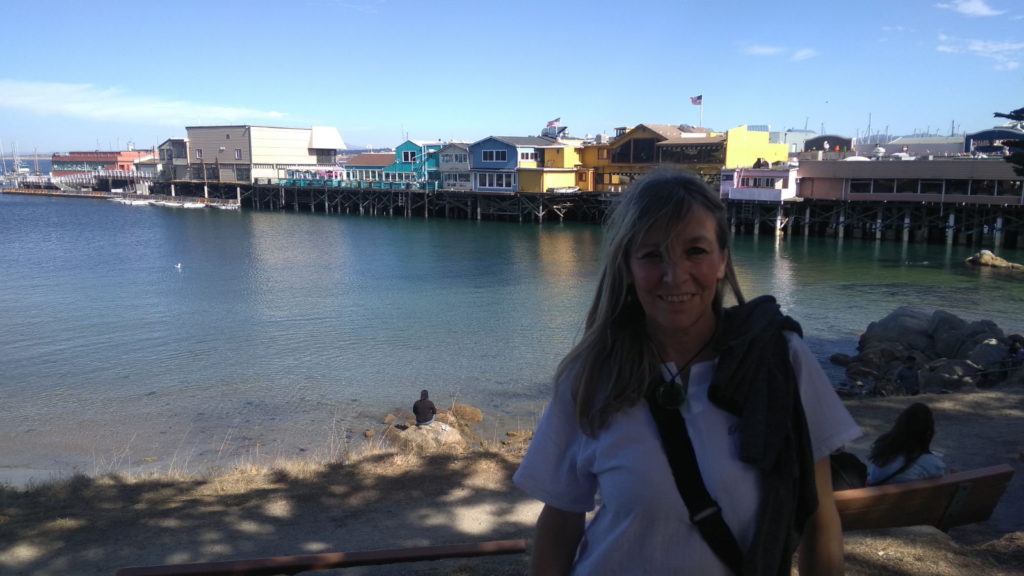
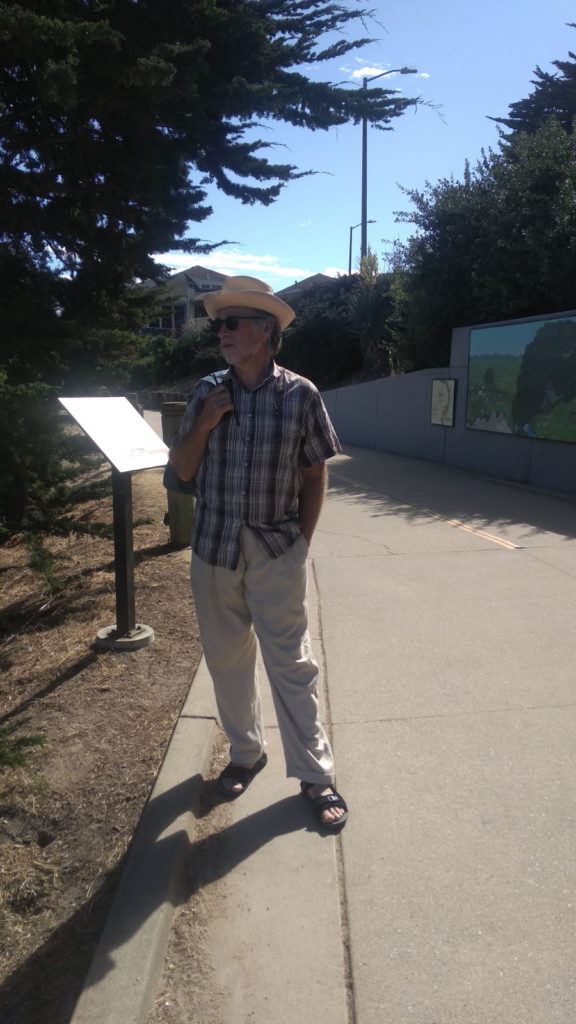
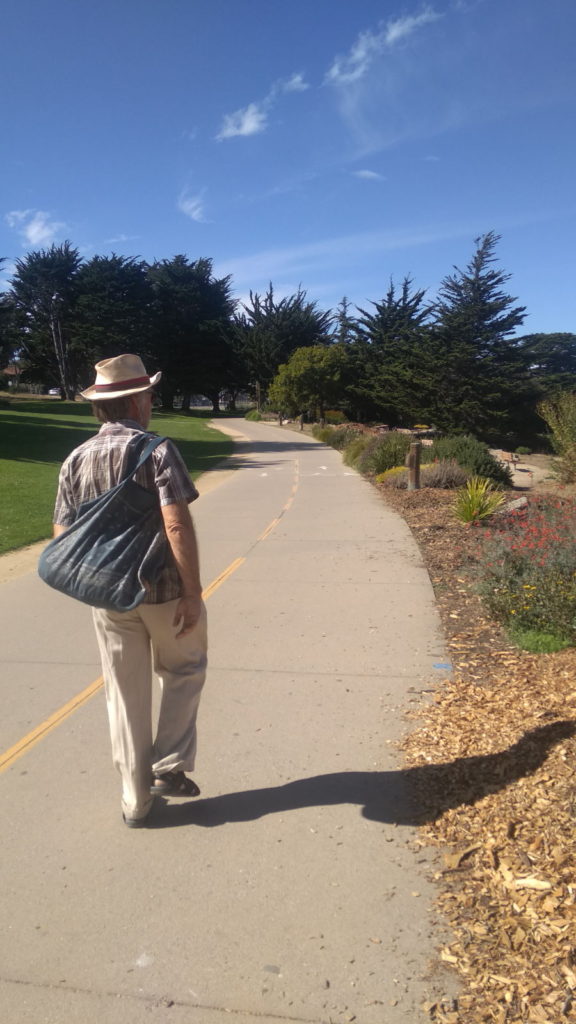
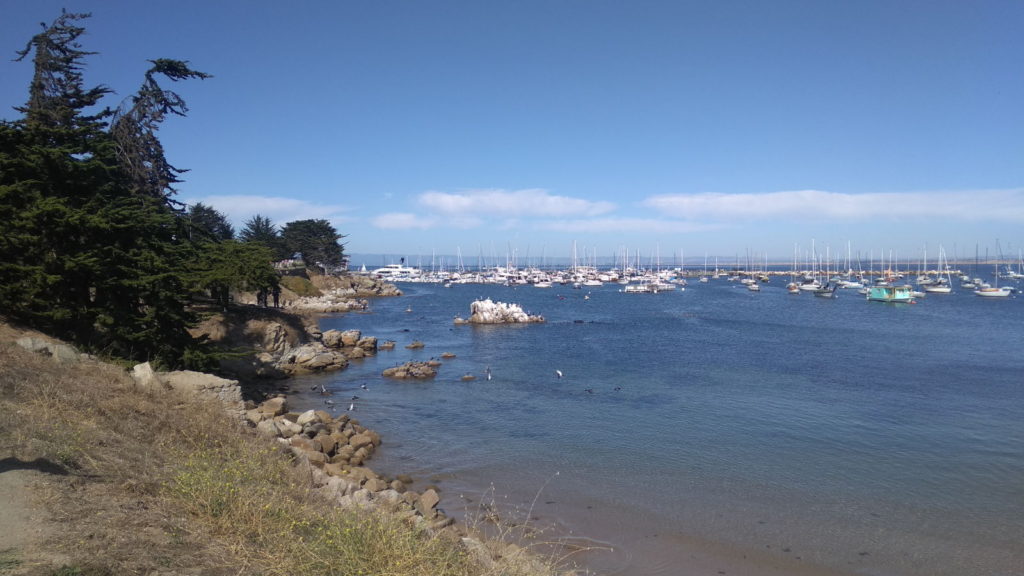
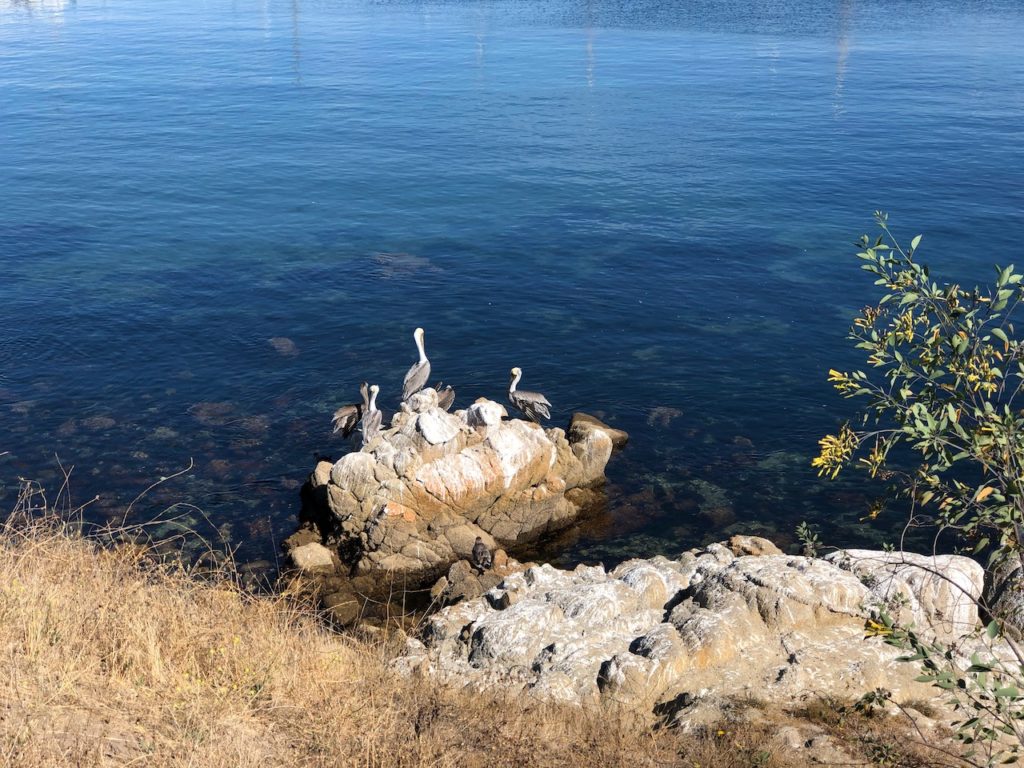
Monterey’s Fisherman’s Wharf is smaller and consequently less lively than San Francisco’s – even with all the usual seafood restaurants, gift shops, candy stores and whale watching and fishing excursion tours. We ambled around this compact, quaint tourist attraction for an hour or so. Well who doesn’t like the occasional browse in shops full of tacky gifts and souvenirs! Actually some of the items on sale were of high quality and unusual enough for us to linger and examine them. We booked a table for dinner at one of the restaurants before heading back to town to do some shopping. The festival was still in full swing when we arrived there so we sat and watched the last few performances before the finale. One guy from the audience who joined in the dancing bore a striking resemblance to the man currently making a pig’s ear of being our Prime Minister. See the pic below 😉
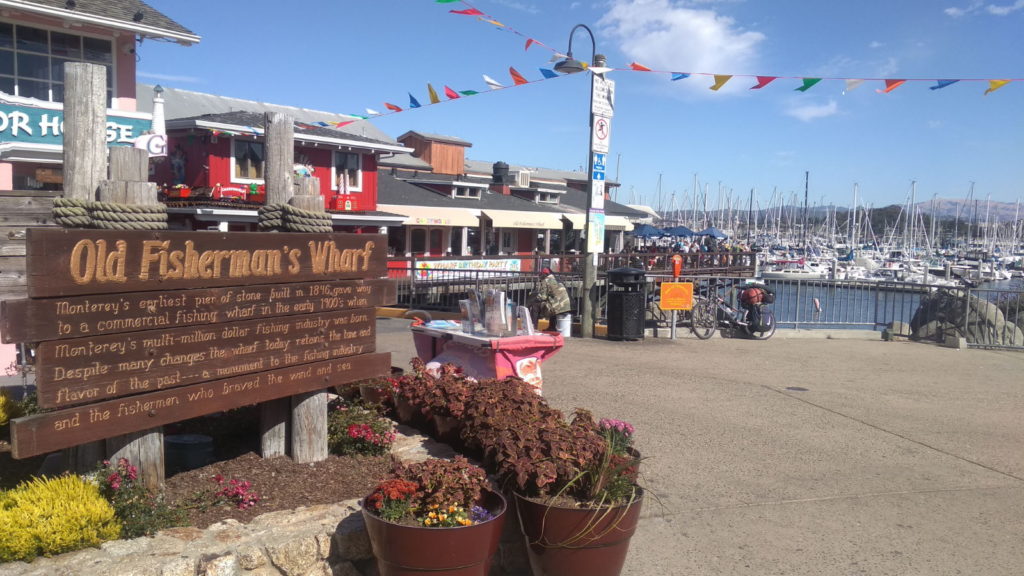
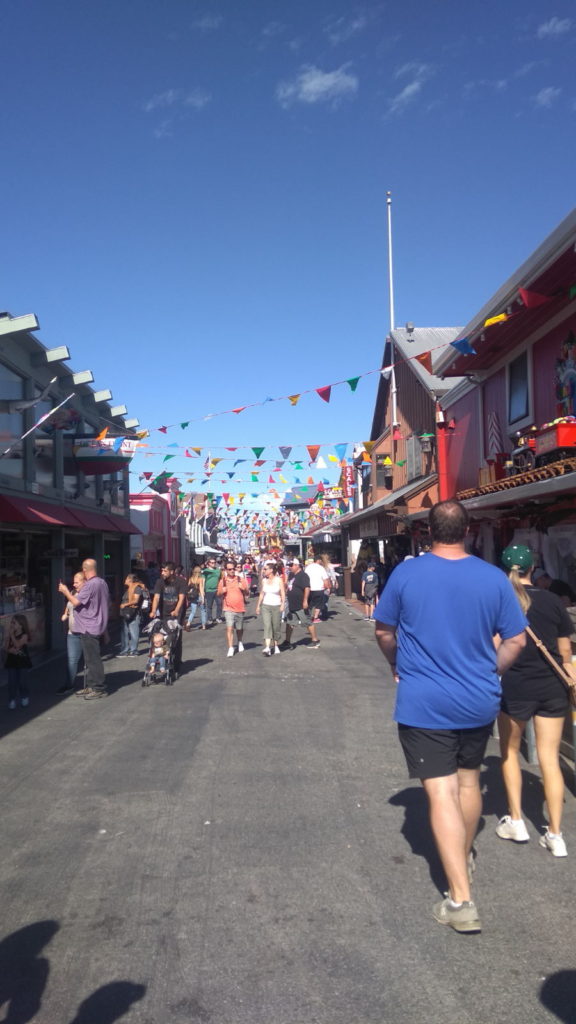
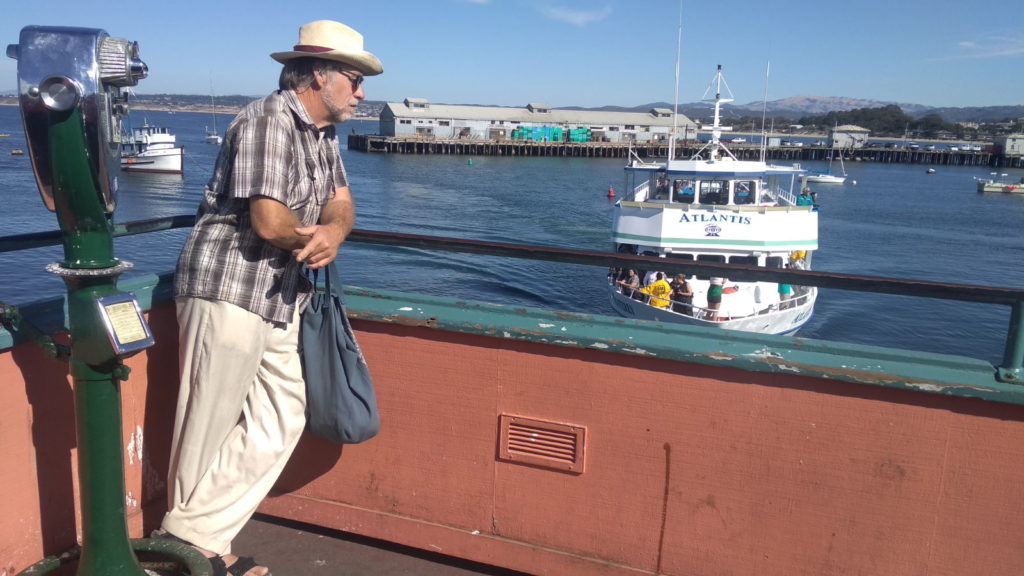
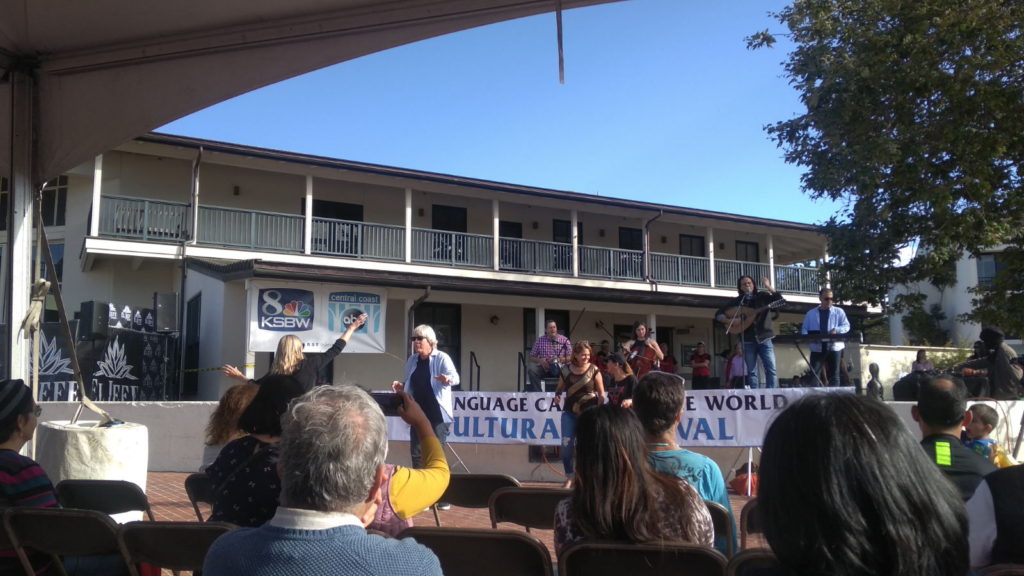
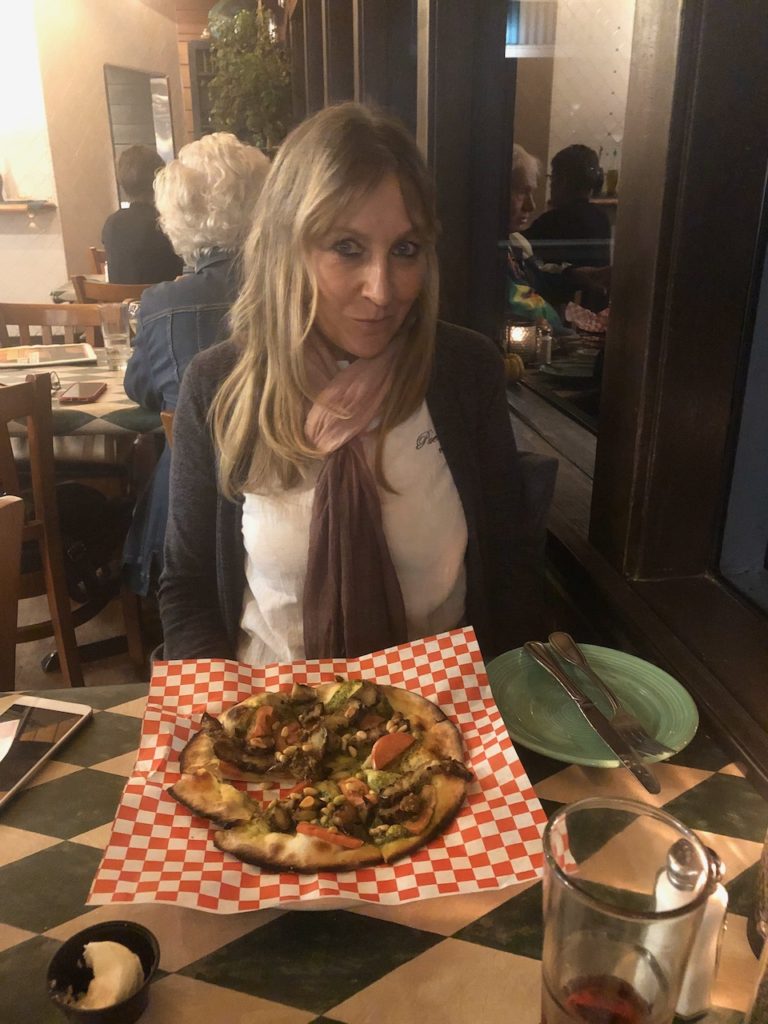
Monterey revealed more of its history and places of interest over the few days we were there. Considering the Spanish and Latin American heritage we were surprised to find at least three of its pubs advertising their Britishness. Parts of the town centre did actually resemble old English market towns but we never discovered why the pubs were festooned with UK flags and displayed menus boasting fish and chips, Sunday roasts and sausage and mash. Always a fan of charity shops, I have grown to love the ‘thrift stores’ here in America. Some of them are like social history museums with their old crockery, kitchen appliances and toys – and as in the UK there is always a diverse selection of books to browse.
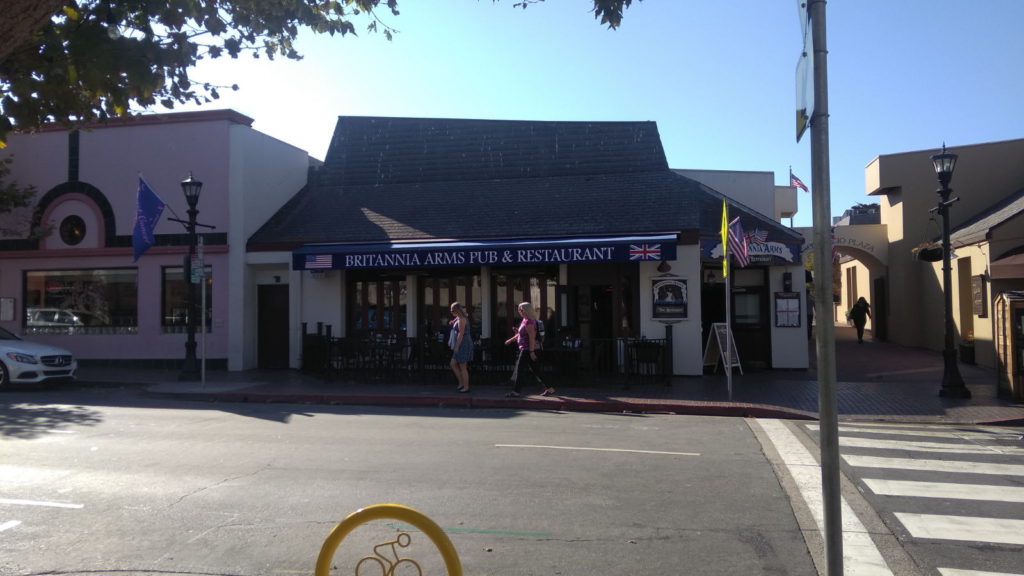
The author, Robert Louis Stevenson resided in Monterey for a brief period in 1879. His short stay (a mere couple of months) didn’t deter Monterey from marking the occasion, however and the house he stayed in is now a museum filled with his personal artefacts along with art pieces created by his wife, Fannie. The large white house was closed when we looked at it, as are most museums on Mondays but it was enough to see it from the outside and continue on admiring the other beautiful old buildings in the town. A local information leaflet informed us that pristine, whitewashed buildings and substantial residences made of adobe bricks began to line the streets as Monterey expanded. Spanish building methods and New England architectural features combined to form the popular ‘Monterey Colonial’ style that so reminded me of the historic structures in parts of Spain.
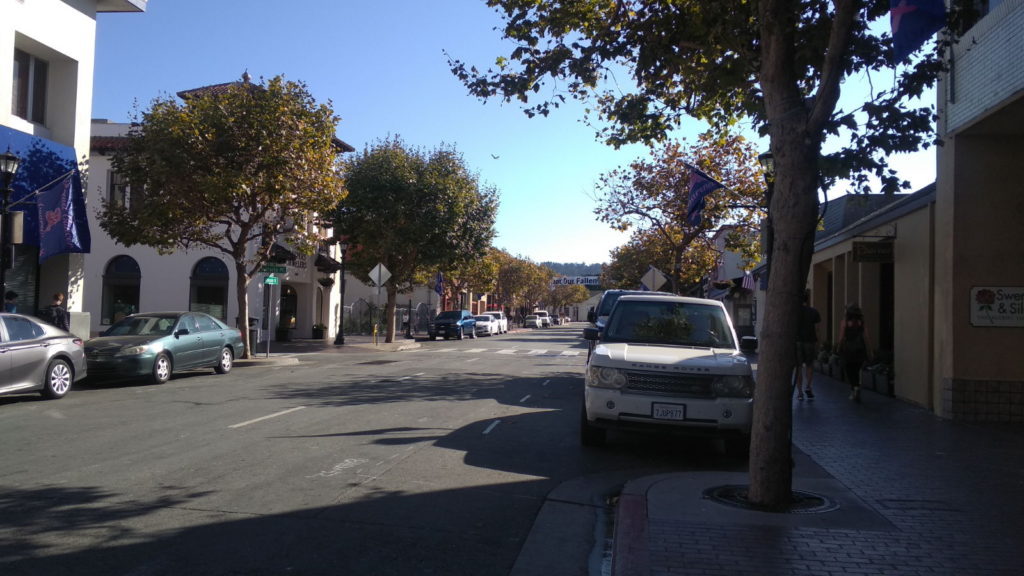
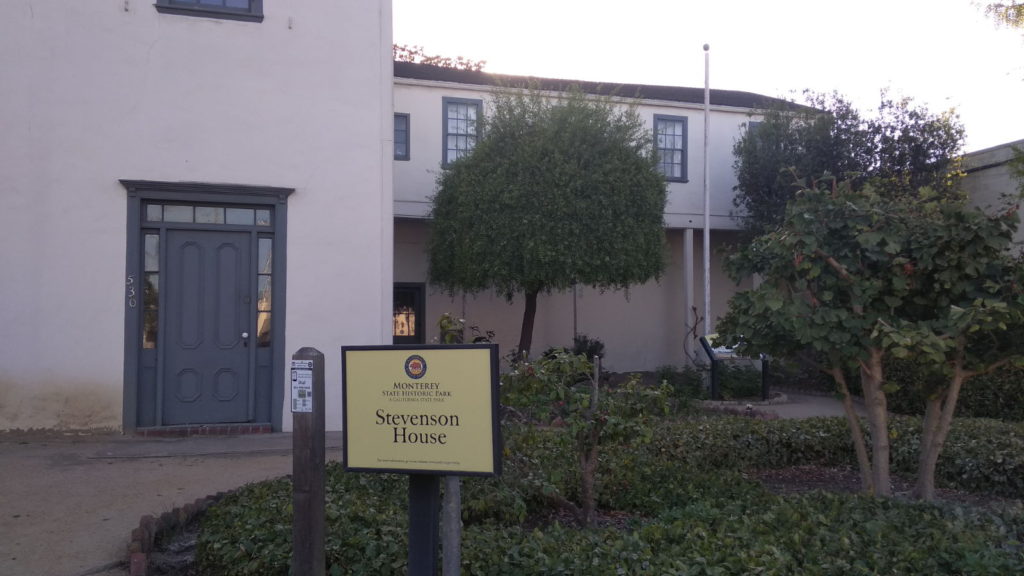
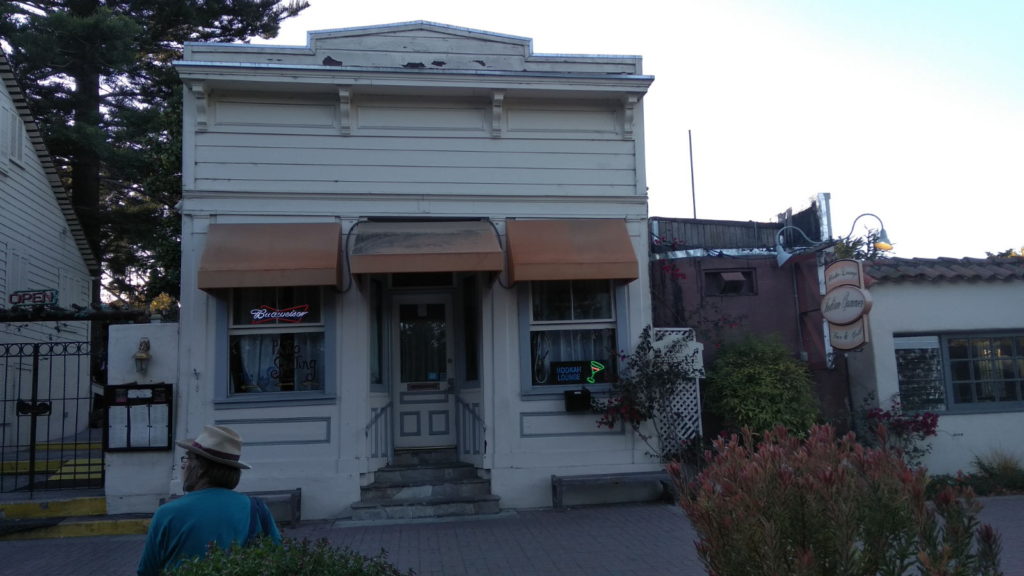
The primary reason for our visit to Monterey was to visit Cannery Row, the place immortalised in Steinbeck’s novel of the same name in 1945. Paul had recently finished reading Steinbeck’s 1940 account of his travels with marine biologist Ed Ricketts in The Log from the Sea of Cortez, so we were both keen to see the place that profoundly influenced the men. Ricketts had a lab in Cannery Row for his marine studies and he and Steinbeck became great friends after meeting in 1930, remaining so until Ricketts was killed by a train in 1948. Cannery Row was named so by an anonymous journalist in 1919 but the area had been used for fishing as long ago as five thousand years. During the time Steinbeck lived there it had become known as the ‘sardine capital of the world’ and the colourful mix of characters working there ignited his imagination. I knew it wouldn’t look the same as it did in Steinbeck’s day, and thankfully, it wouldn’t smell the same either. Nowadays the area is focused on recreation rather than industry with luxurious hotels and restaurants and a plethora of shops for tourists. Surprisingly there was a distinct lack of bookshops when we looked to see if we could buy a copy of Cannery Row. It wasn’t until we were browsing a huge antique mall later that day that we found some dusty-looking old editions of his books, and they were very expensive.
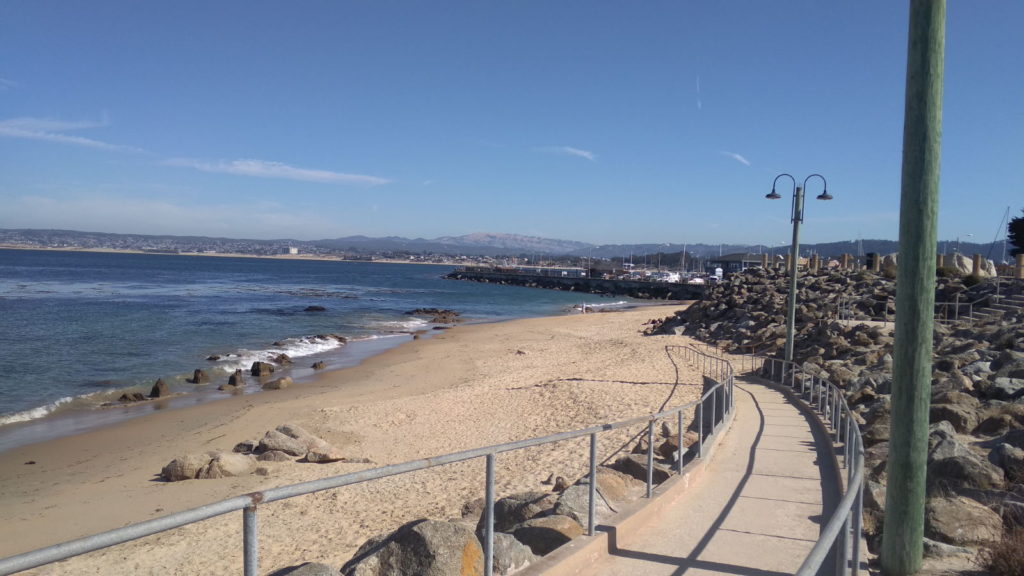
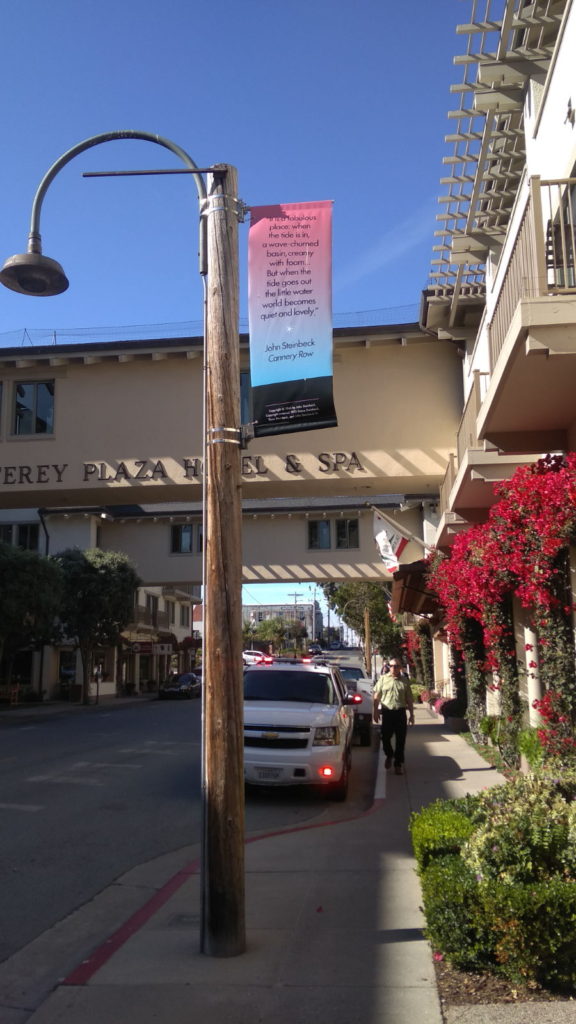
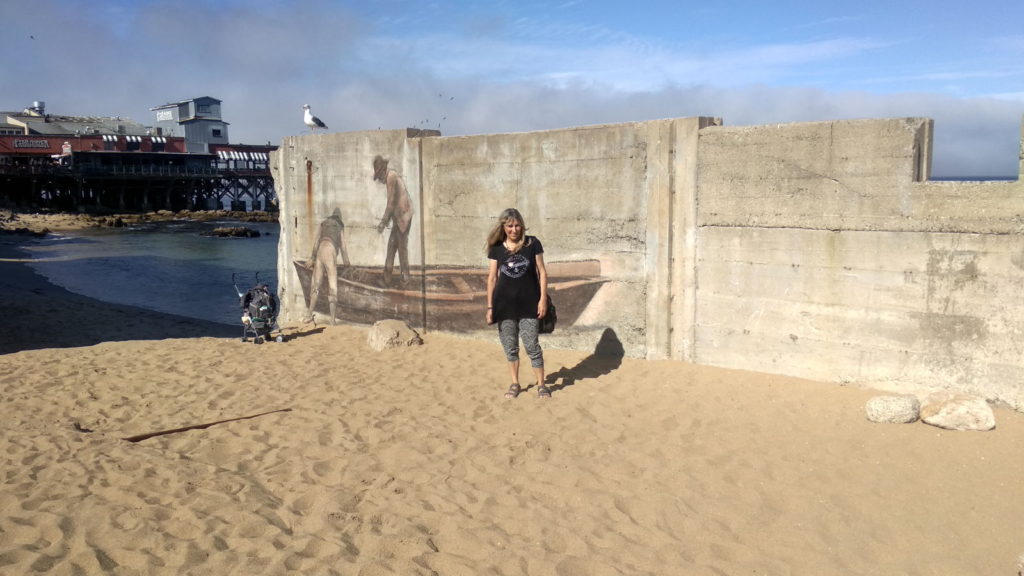
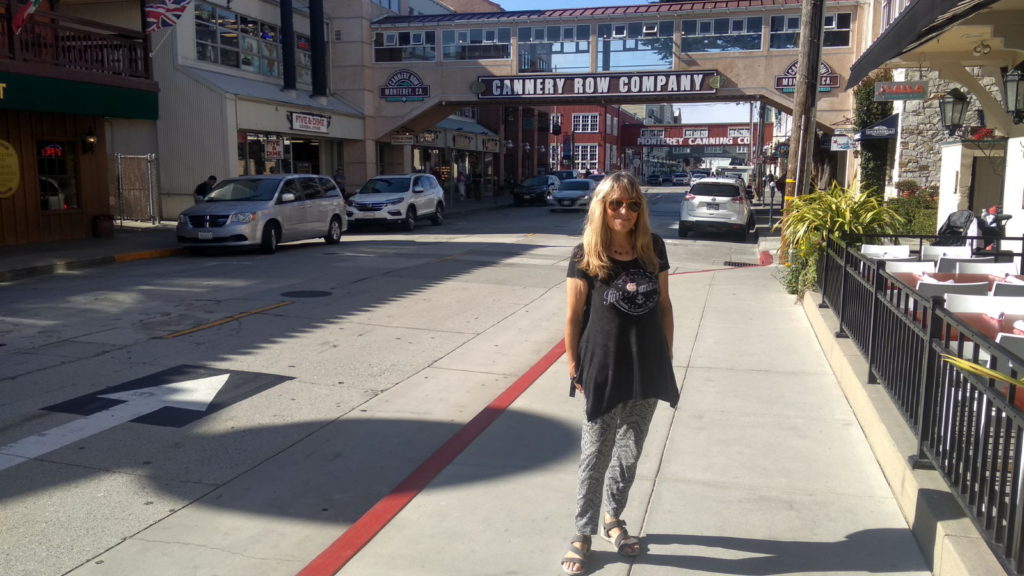
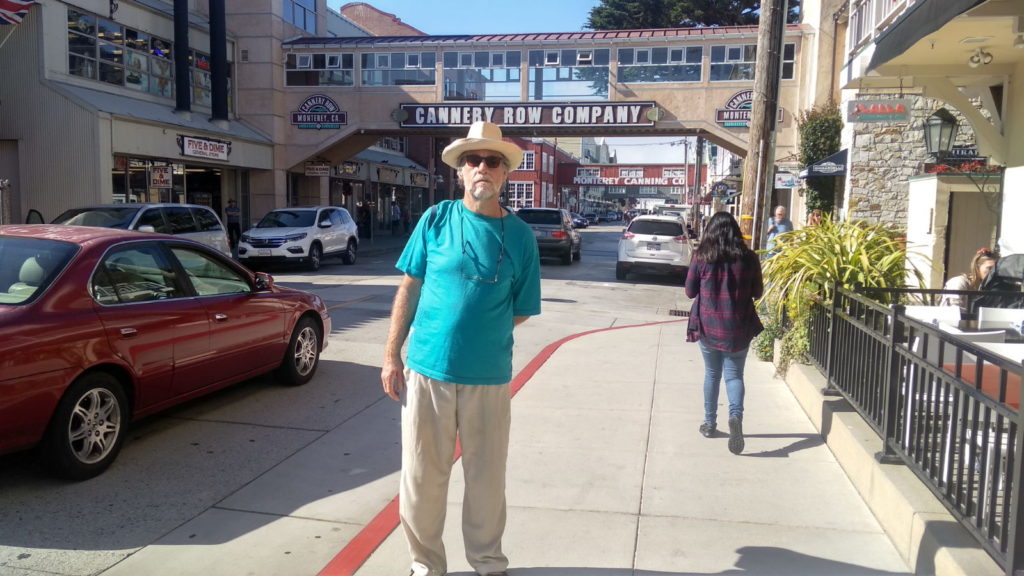
It was still possible to imagine the place as it was when fully functioning as a fish processing industry, thanks to plenty of information and pictures of how it used to look. I particularly liked the large murals depicting Cannery Row’s workers painted on the wall of the recreational trail.
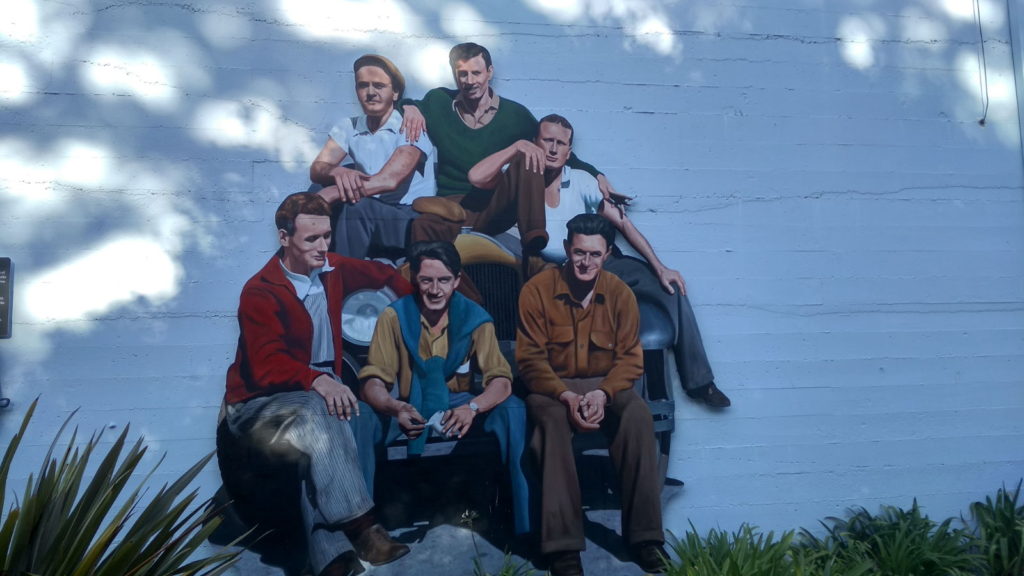
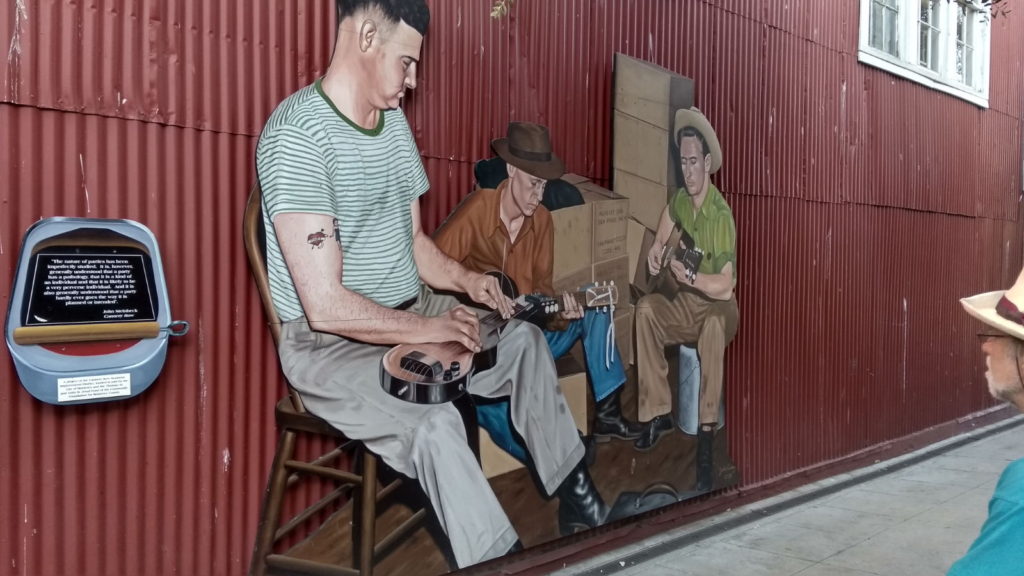
We took the opportunity to go for a couple cycle rides during our five day stay in Monterey. The first one was along the Coastal Recreational Trail all the way to a place called Lovers’ Point in Pacific Grove. It was a perfect day for a bike ride: sunny but not too hot and the seascape scenes were stunning. Along the way we spotted a plaque dedicated to the memory of John Denver who had died in Monterey Bay when the plane he was in crashed there in 1997.
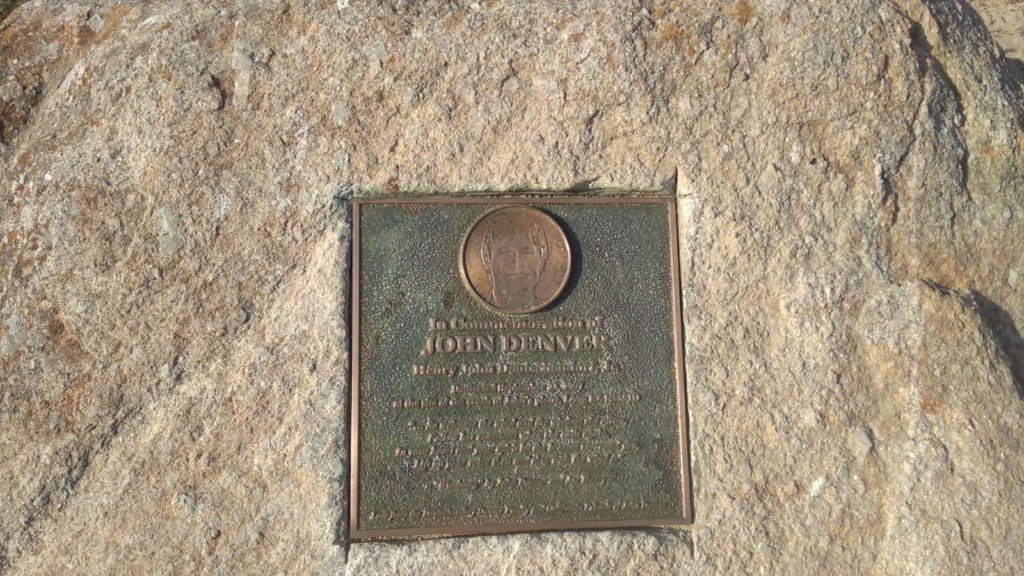
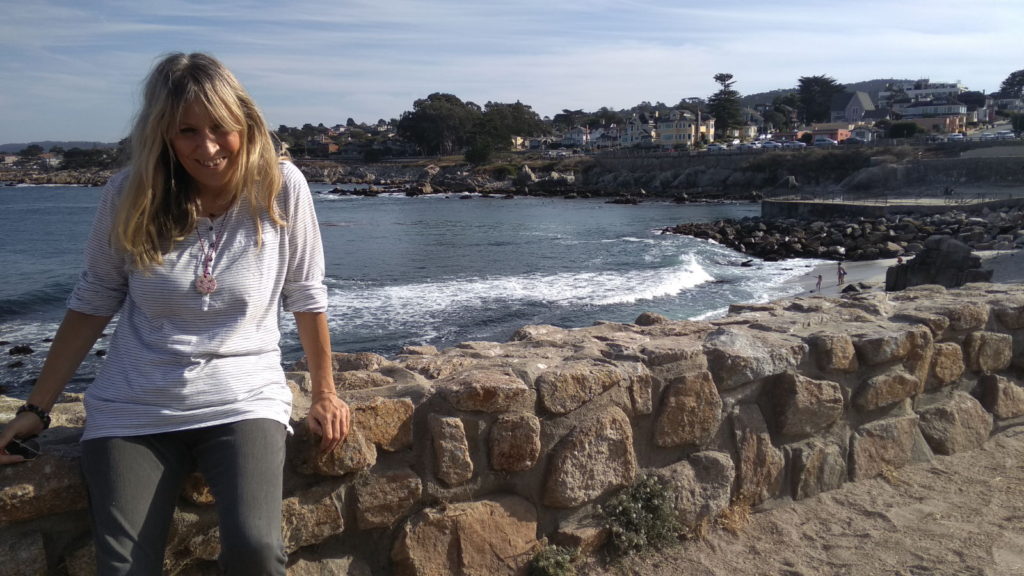
With Halloween fast approaching, the houses we passed were decorated in the manner you see adorning some homes in the UK in the run up to Christmas. They are absolutely fascinating and we continue to see ever more flamboyant ones everywhere we go. The pumpkin displays in the supermarkets are pretty impressive too. I hadn’t realised there were so many varieties and colours, especially when I think back to my childhood when, if we wanted anything to carve into a Jack o Lantern we would have to make do with a turnip or a swede!
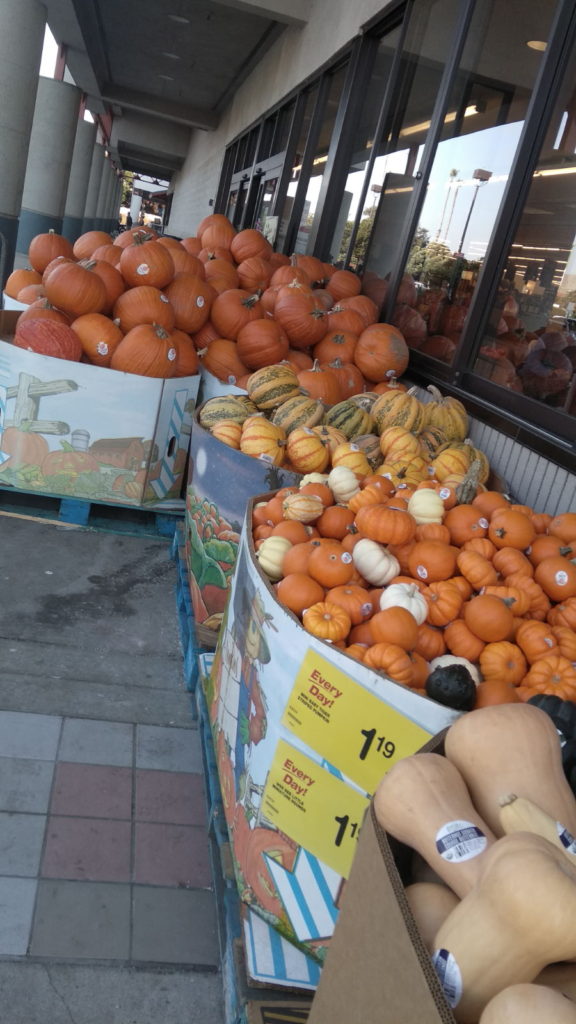
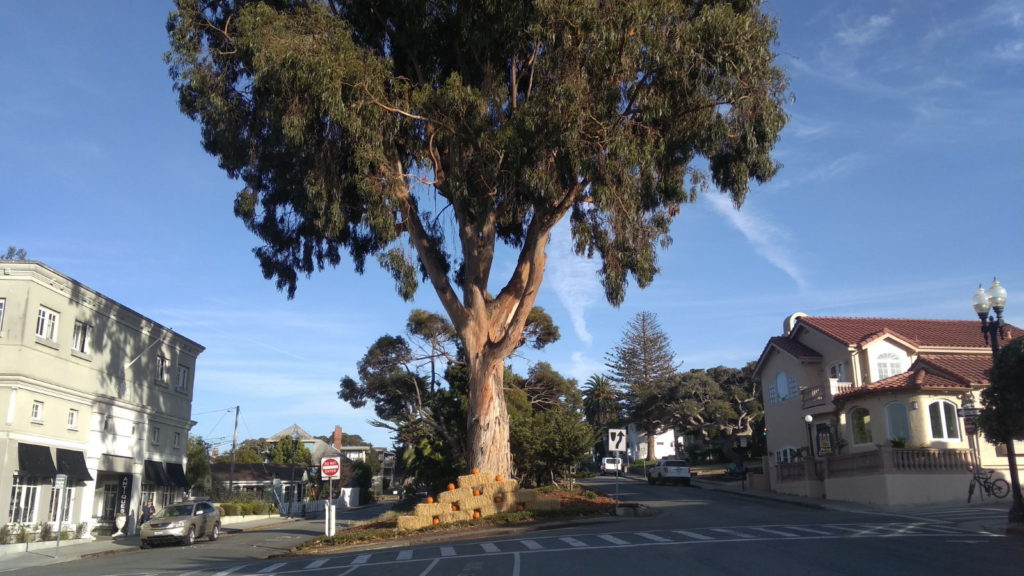
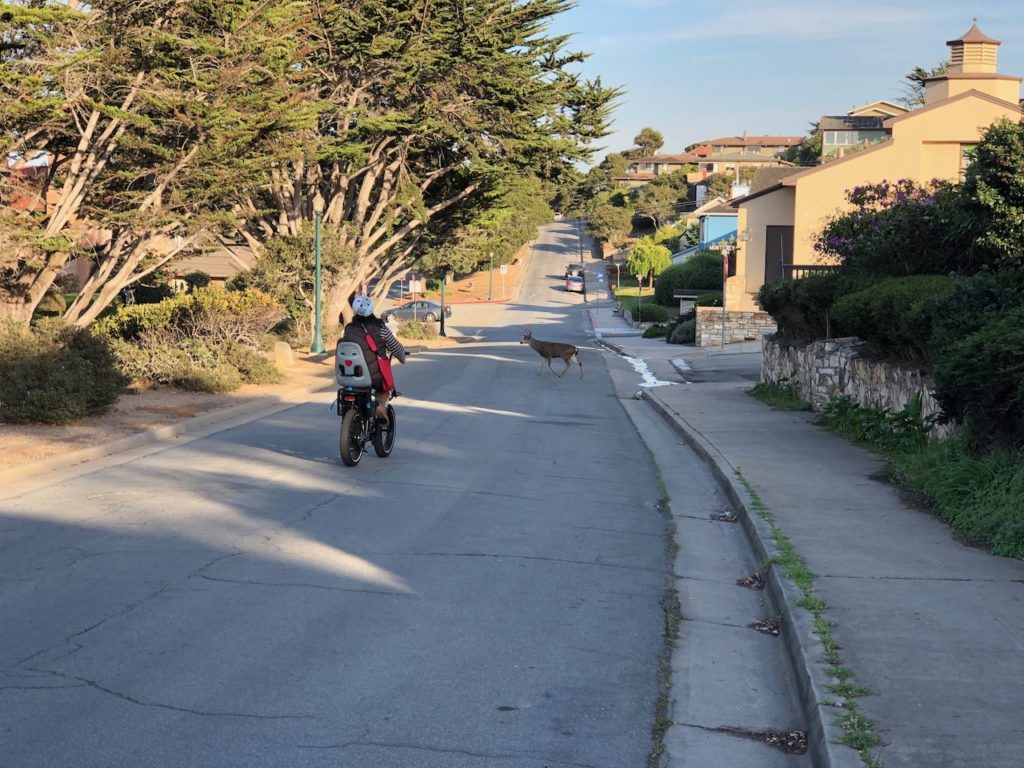
Lovers’ Point turned out to be full of squirrels as opposed to lovers. There were hundreds of them scurrying around literally begging for food from people. At first we thought they were rats because we are used to seeing squirrels in trees and these were all over the rocky beach and grassy areas but it seems they don’t need trees…and we still need to brush up on our knowledge of birds and animal types.
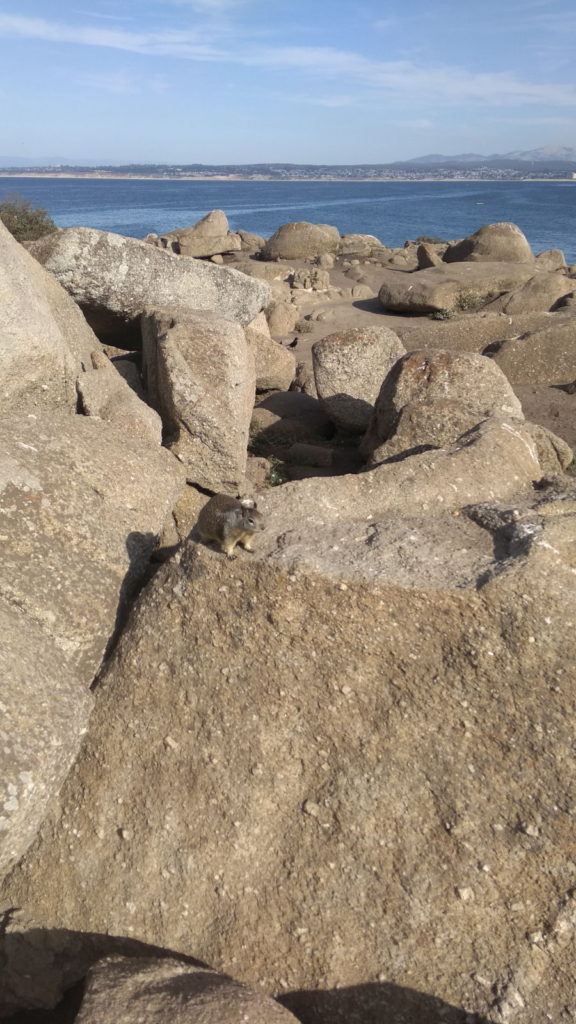
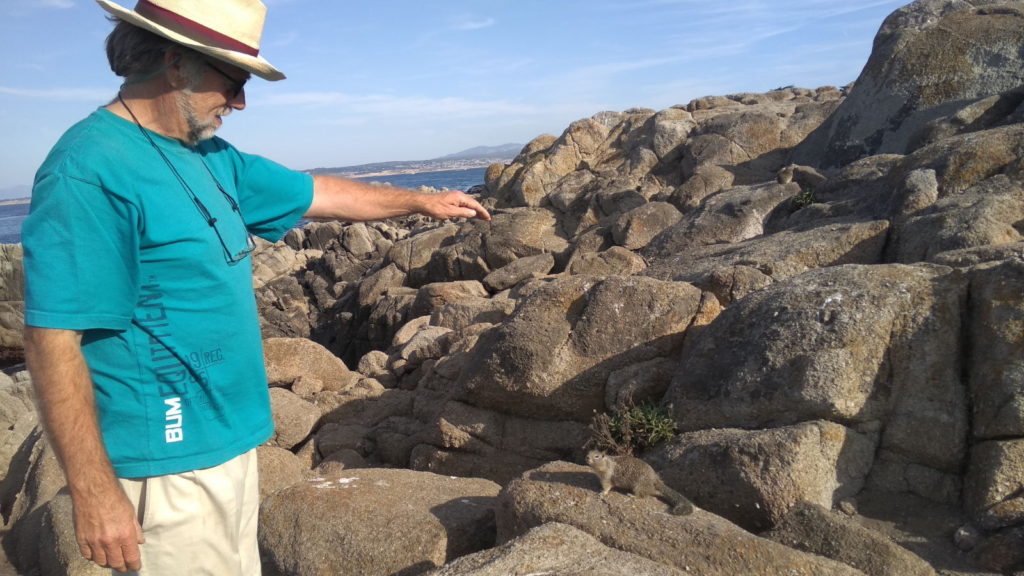
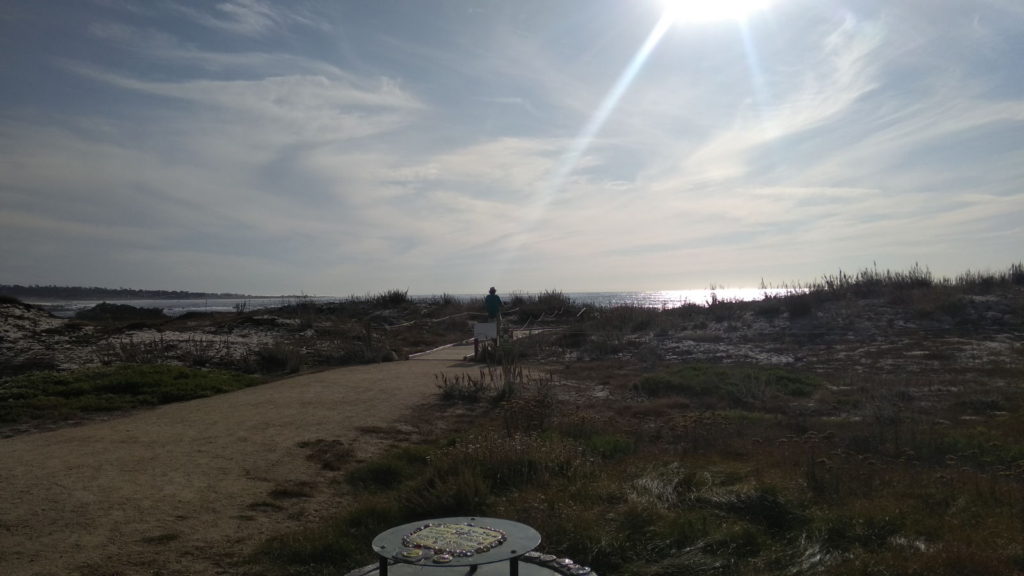
Our second bike ride was infinitely more challenging. We didn’t set off until midday and it was an extremely hot day. As is often the case, the distance on the map looked ‘doable’ but was in actual fact a distance that required the stamina and physique of a trained athlete! Google maps had stated that the journey from Monterey to Salinas would take around 1 hour and 40 minutes by bike, and showed a convenient cycle path almost all the way there. That might work for those of a Tour de France calibre! We hadn’t gone more than an hour when we realised we’d taken on too much of an arduous task. The heat didn’t help, and parts of the track were covered with broken glass and sharp rocks. The final straw came when we had to traverse a busy and wide freeway where cars and lorries were speeding past at an alarming rate. Paul checked the map and said we weren’t even a third of the way there. Our intention was to visit the National Steinbeck Centre and at that rate it would be closed by the time we got there. My legs were about to give up on any more pedalling and we were both sweating and tired so it didn’t take long to decide to park the bikes at the shopping mall across the road and call an Uber taxi to take us into Salinas. It hadn’t been a total waste of time and effort, however because we’d passed some stunning scenes, including a Route 66 road sign which I’d been especially thrilled to see.
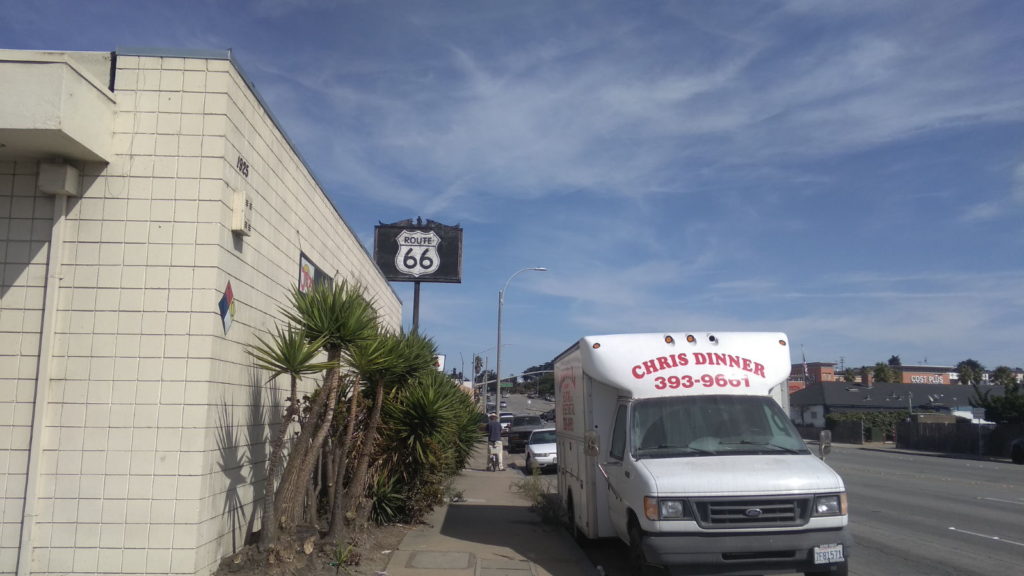
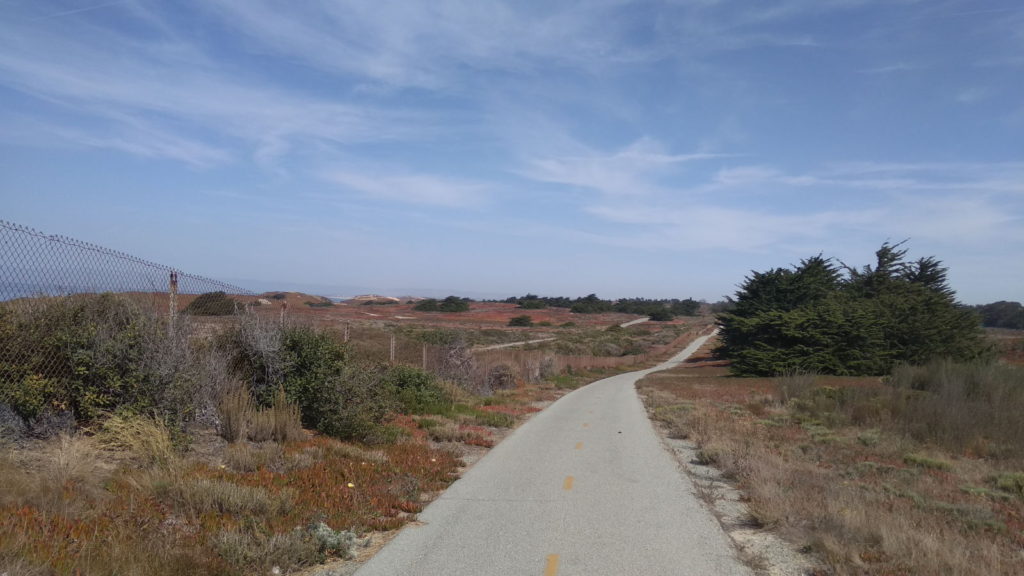
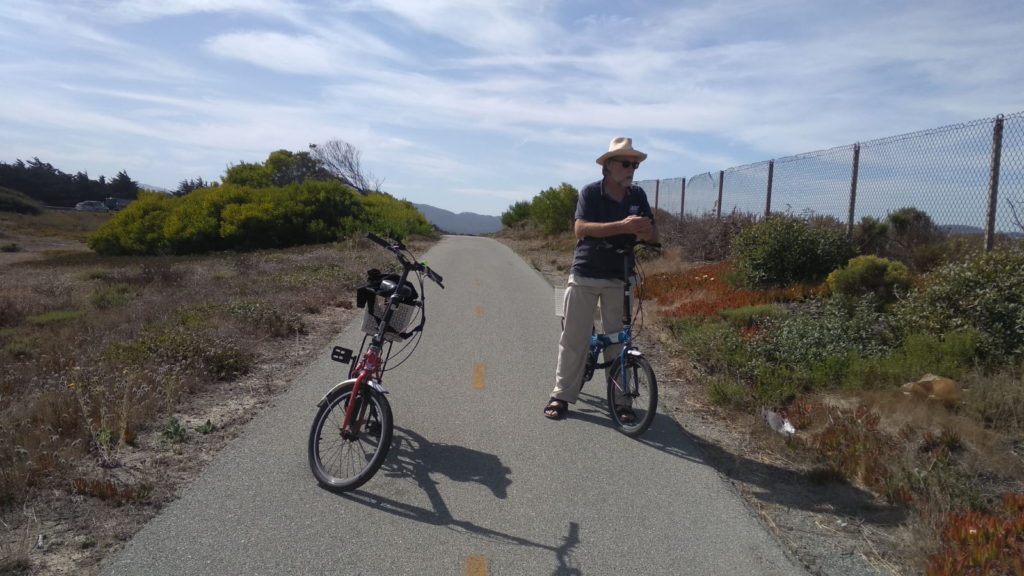
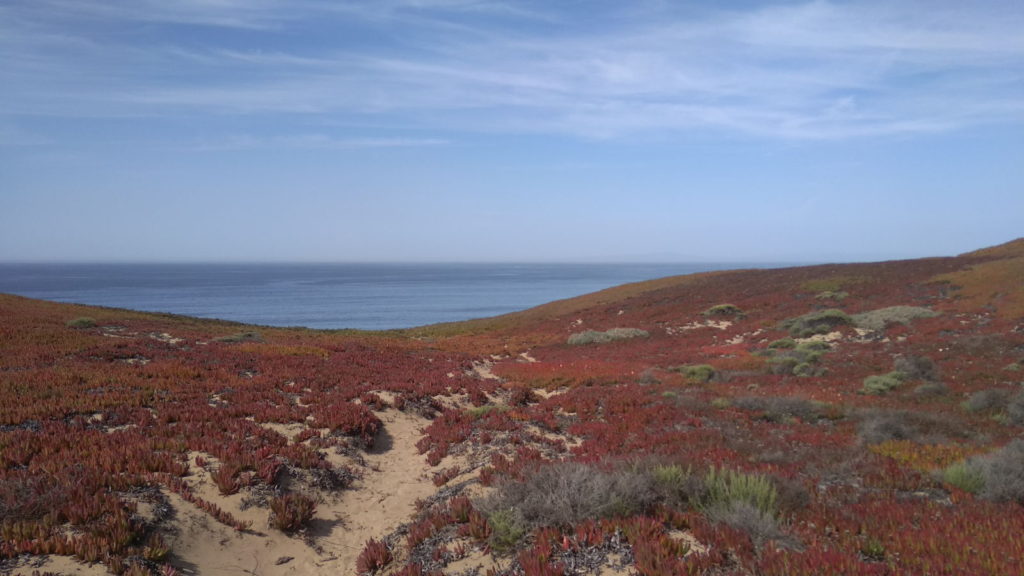
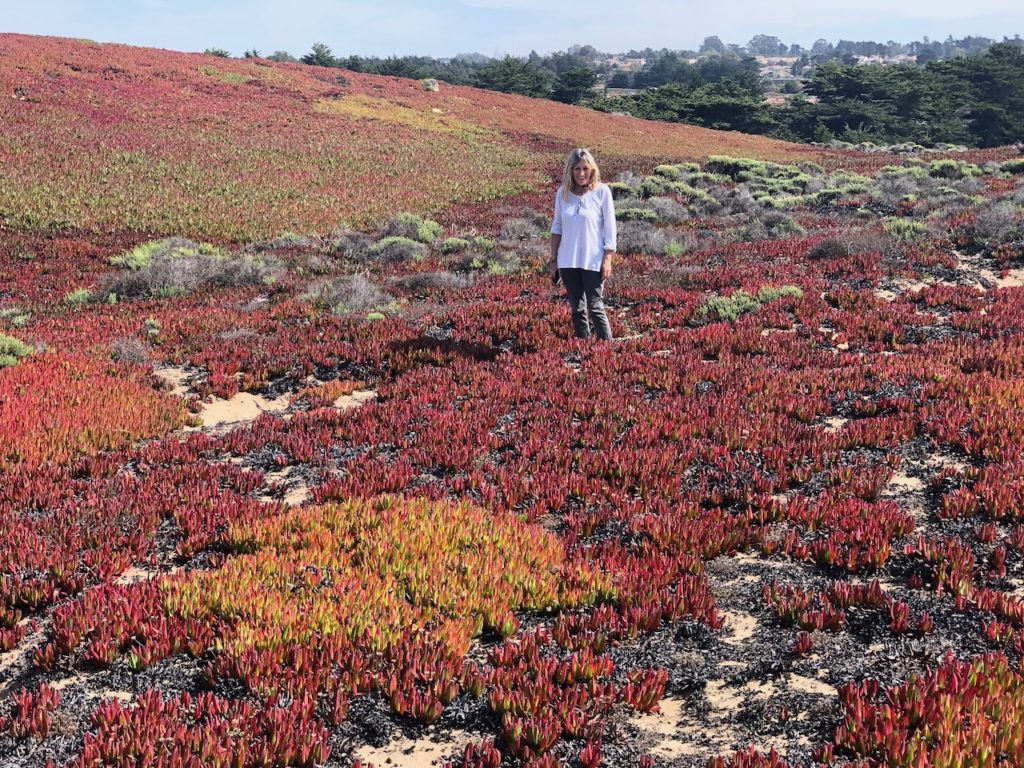
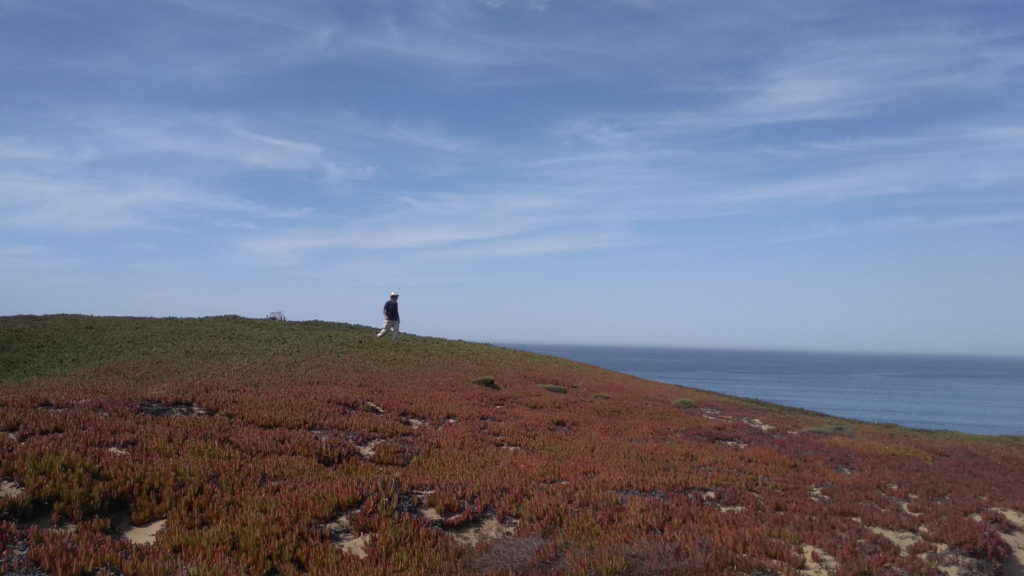
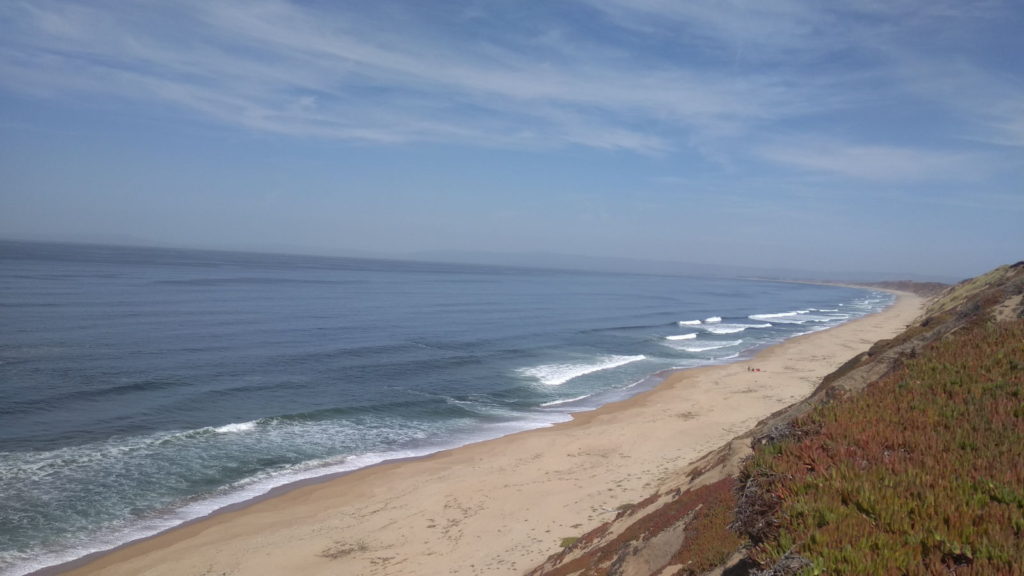
The drive to Salinas made us realise exactly how much further away Salinas was and it was a relief to be in the air conditioned car for the rest of the journey instead of cooking in the sun on the bike. The Steinbeck Centre was very good. Unsurprisingly, since Salinas is where he was born and lived until he was 17, it holds the largest collection of Steinbeck archives in America. The exhibits relating to his works, life and philosophy were of genuine interest to us and we made the most of our time there. A highlight for me was seeing the actual van that Steinbeck had used for his travels across America which culminated in one of my favourite books, Travels with Charley. The house he was born and grew up in is a short walk from the centre so we had a quick look at that before catching a bus back to the mall to collect our bikes for a cool and much more comfortable early evening ride back to Monterey.
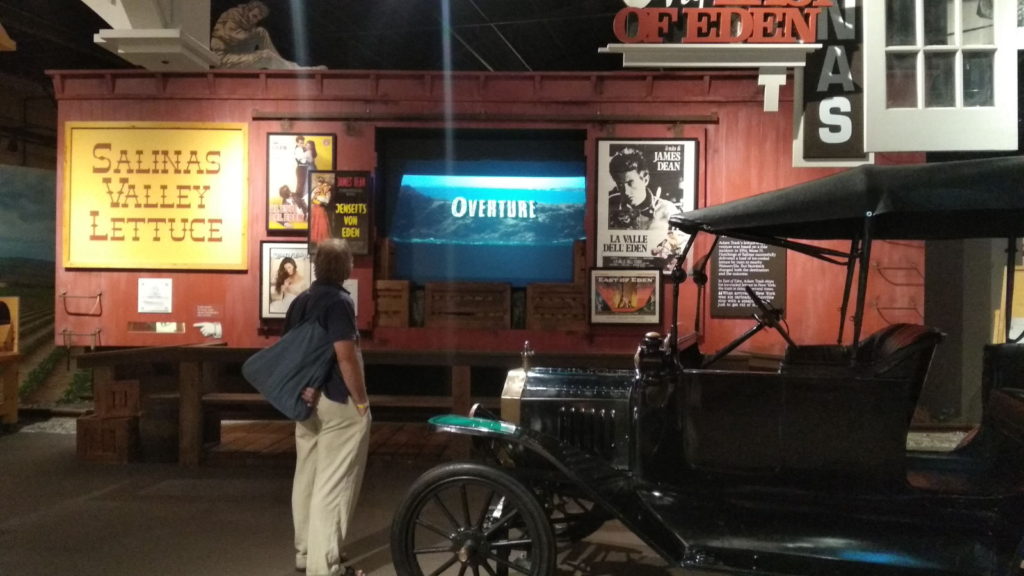
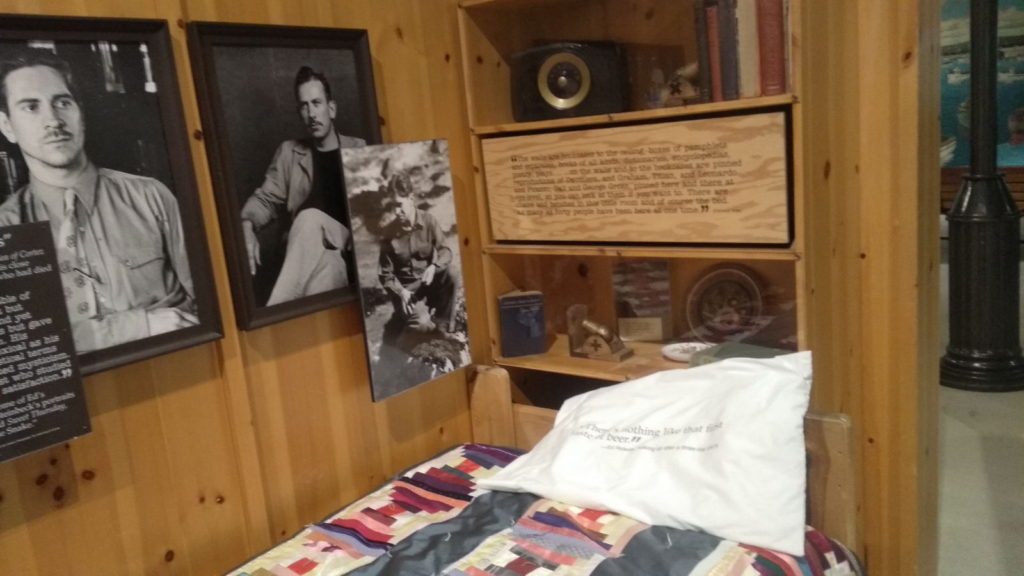
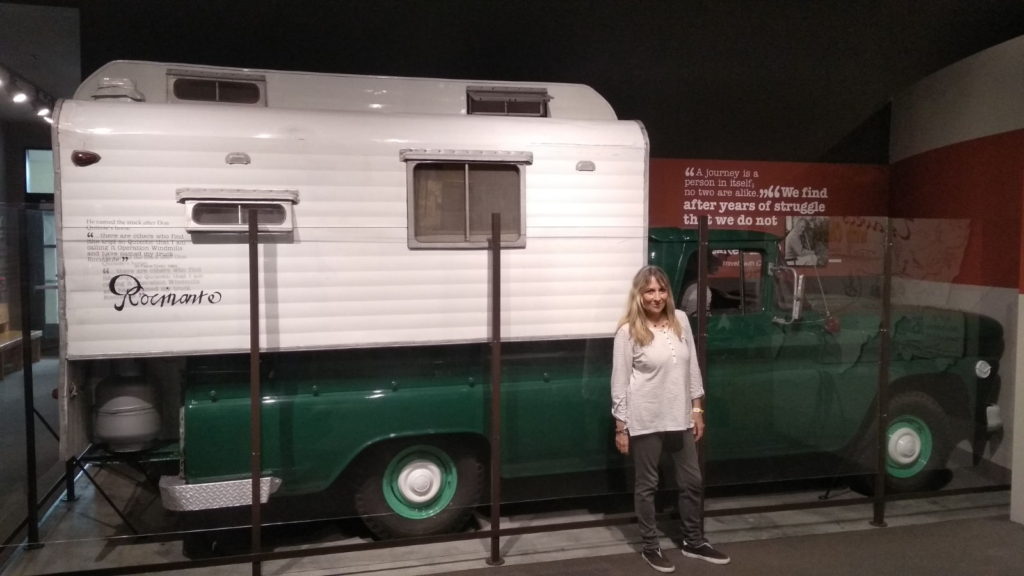
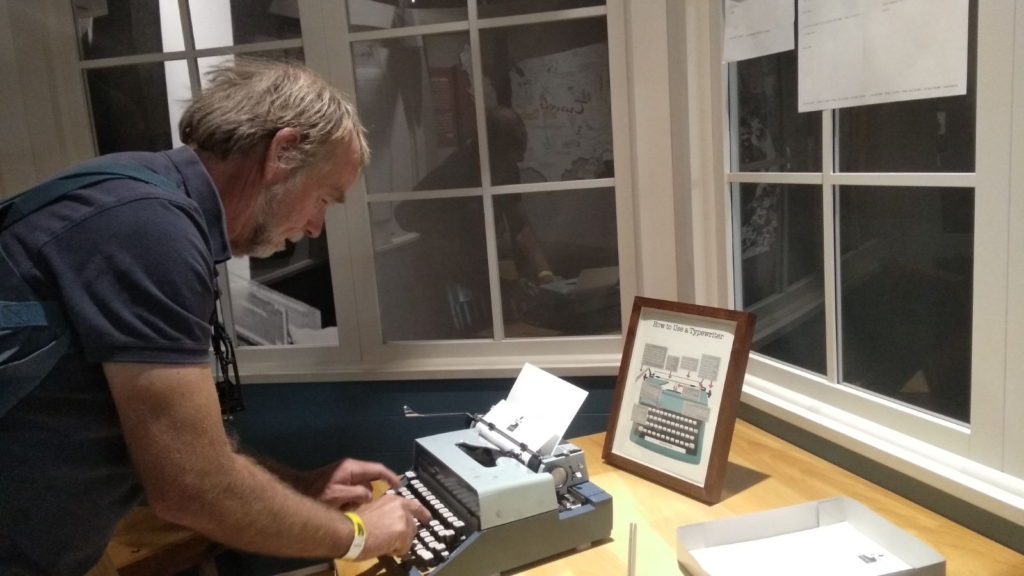
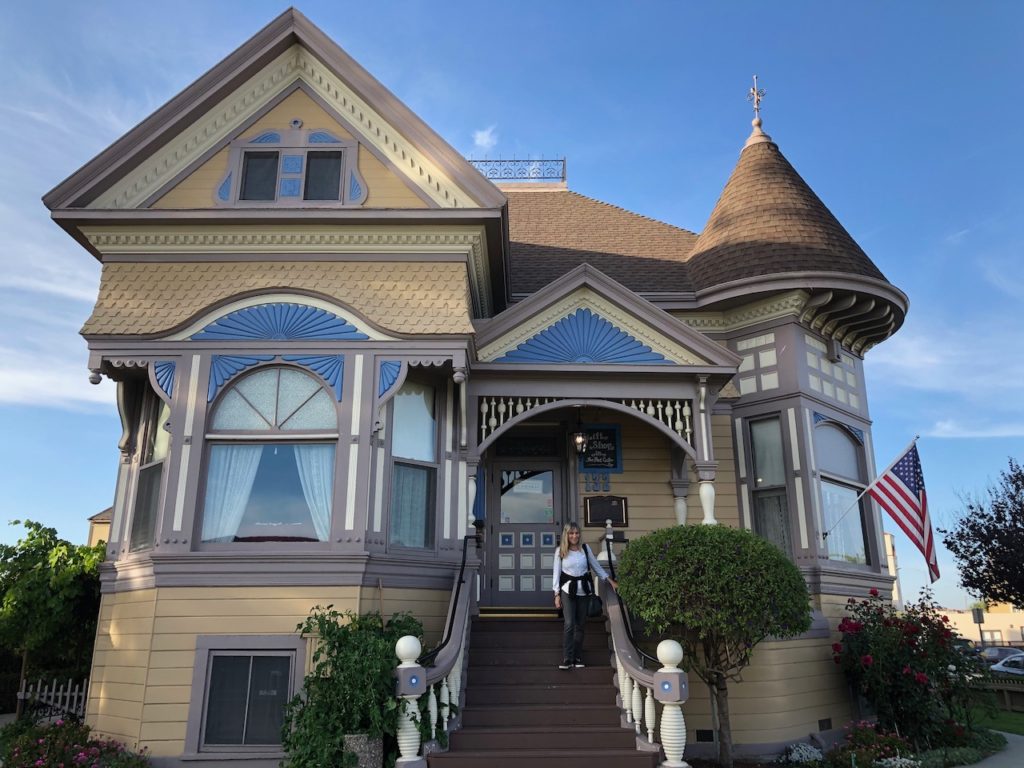
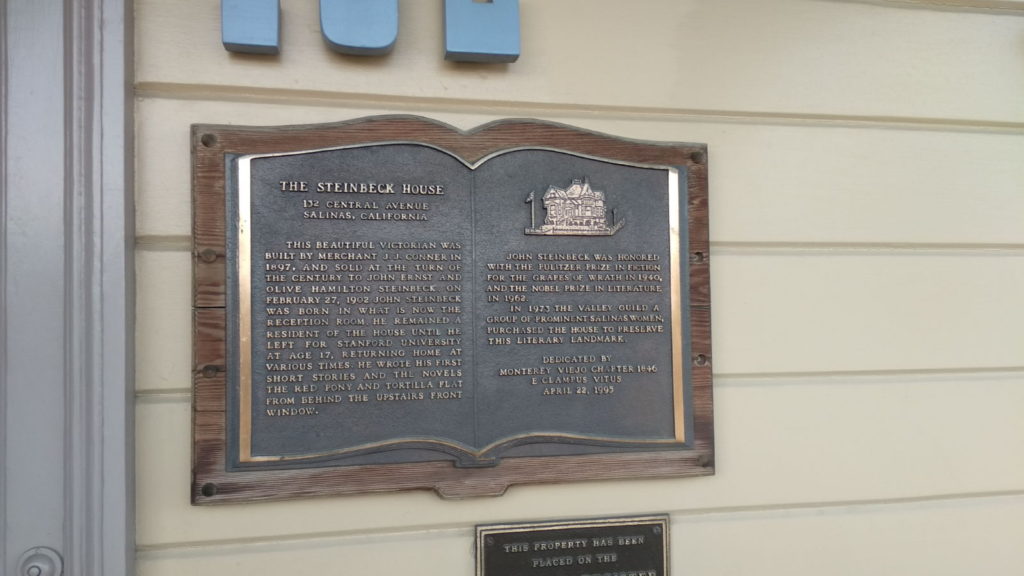
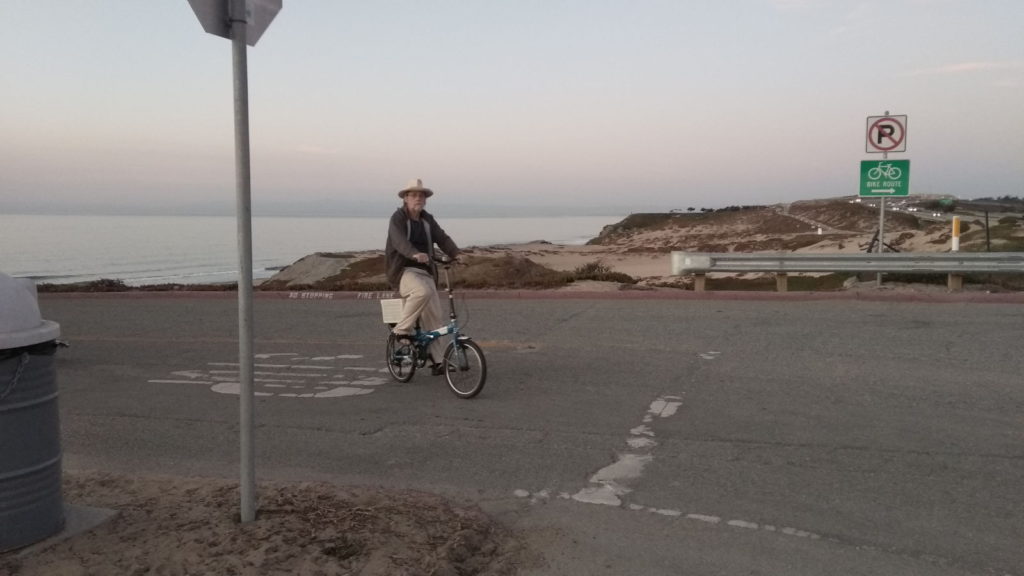
We left Monterey on Saturday 12th October, bound for Morro Bay. This was an overnight passage and we managed to sail through the night with the wind remaining favourable enough for the duration of the passage for a change. It was foggy but there were no other vessels around and we were in no great hurry to get there so we took it slow and steady, arriving at the bay around lunchtime on Sunday. The sea life we’d been told would be all around us began to appear as Morro Bay’s three tall towers from a disused power station came into view. Sea lions, dolphins and sea otters joined us in the water as I steered us towards a mooring buoy, while pelicans flew overhead and perched on the rocky breakwater like sentries. Morro Bay is dominated by a massive dome shaped rock which is in fact a volcanic plug. First Nation tribes consider it a sacred site and it’s protected by the state. For this reason it is not permitted to climb it but a public path allows tourists to walk around its base. We could see people on the beach and trail adjacent to it once we’d tied up to the buoy. Overnight passages tend to leave us (well me at least) too tired to do much once we’ve reached our destination and we put off any excursions until the following day.
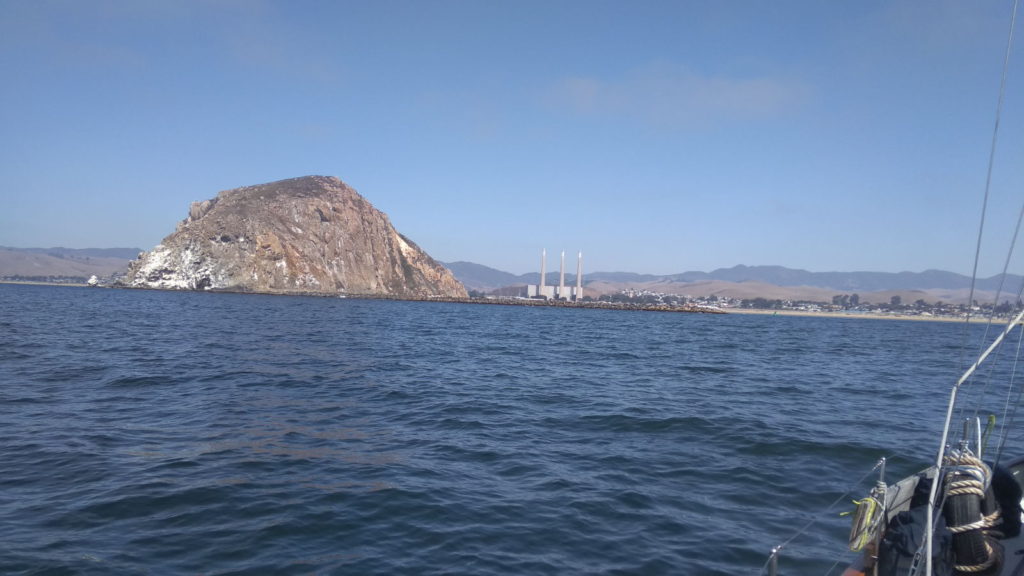
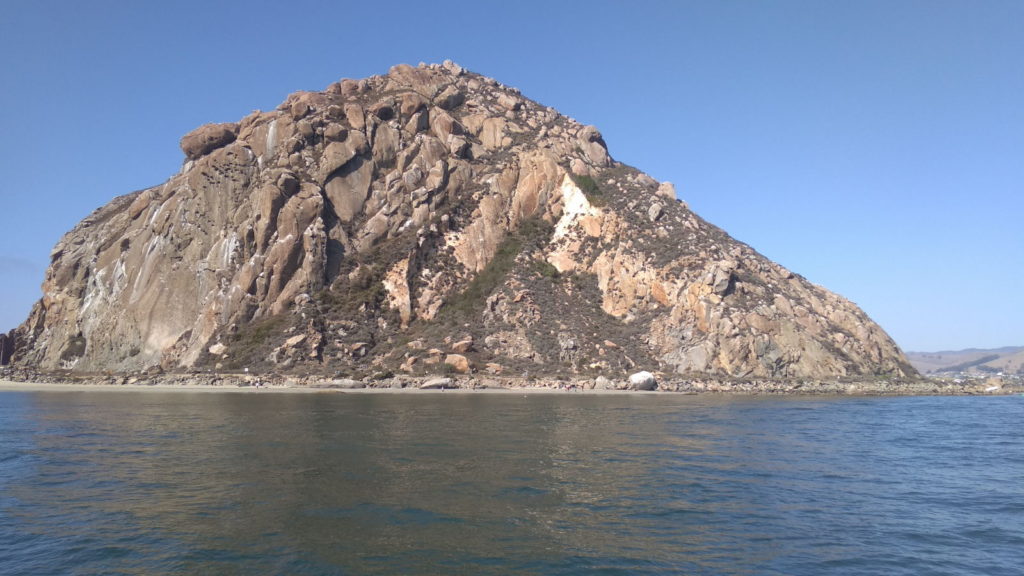
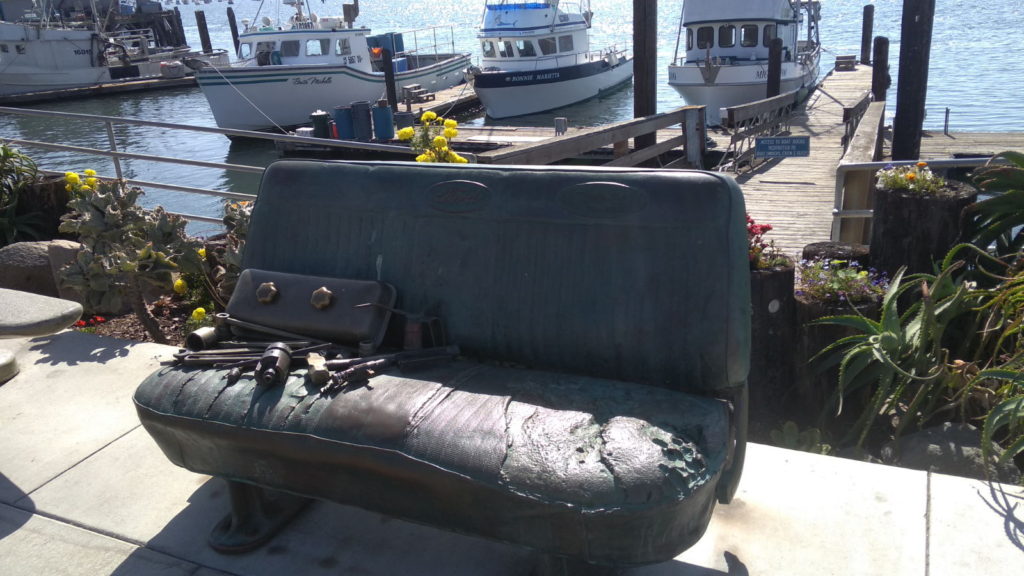
Morro Bay is proud of its charming little seaside town. An exploratory walk along the front revealed a number of signs exhorting people to keep the town clean, pollution free and using contaminants that would have negative effects on the marine life. It’s clearly paid off because the streets were pristine and the water is crystal clear. The tiny maritime museum consisted of one small square room crammed with exhibits and items for sale. It was free admission and the friendly lady inside was keen to know where we were from after hearing our accent. A good number of people in both Canada and the US have assumed us to be Australian. It must be a bit like us being unable to distinguish between the Canadian and American accent. We walked along the shop and gallery lined waterfront side of the street and discovered some high class, artisan, locally-made and unique (you get the picture) souvenirs and products for sale – all very expensive but nice to browse.
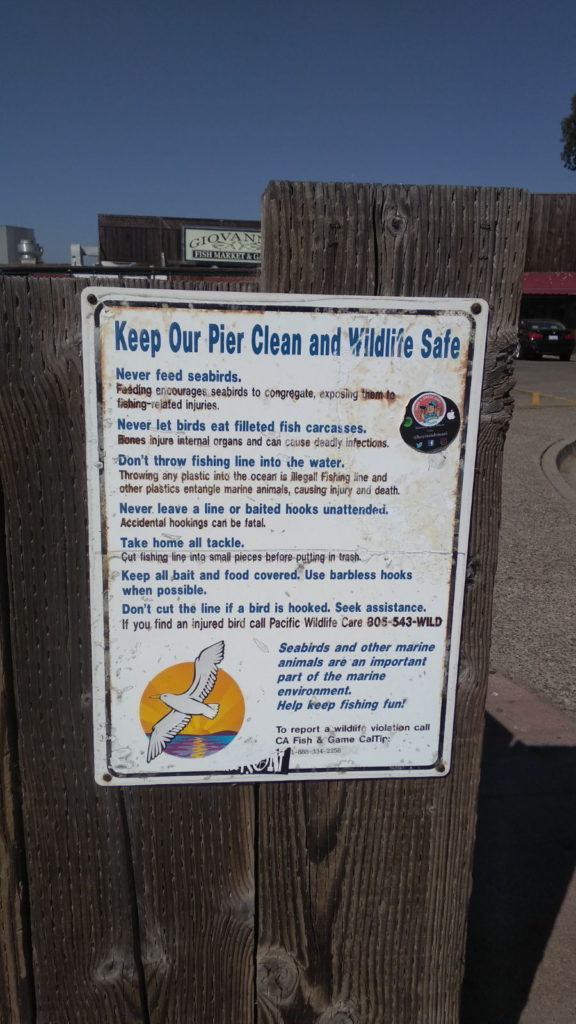
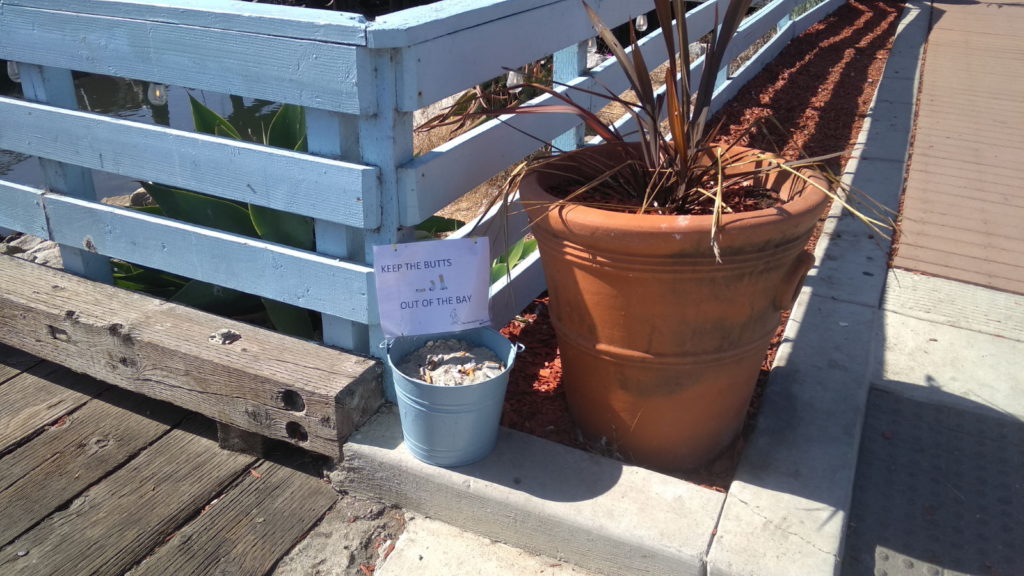
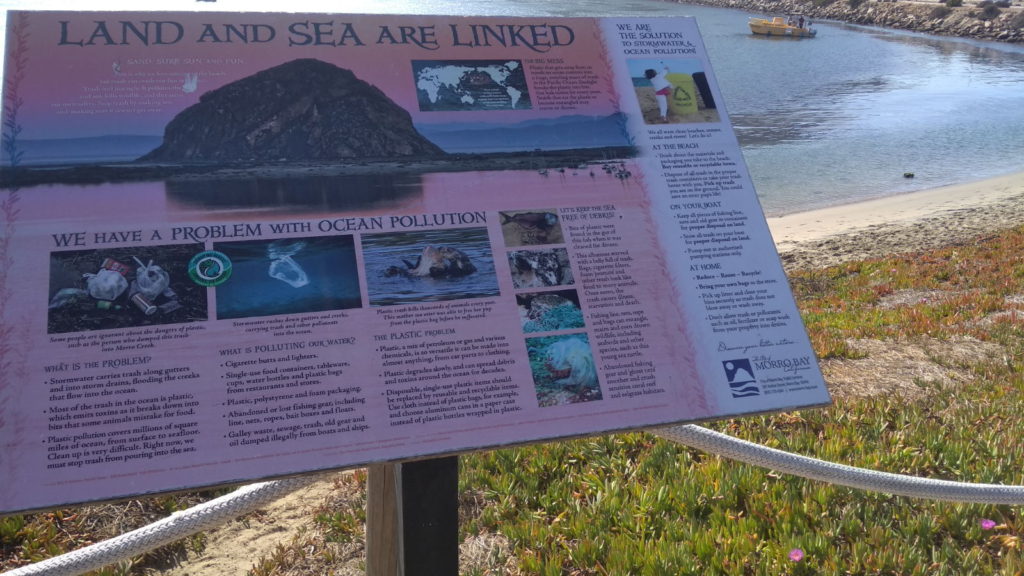
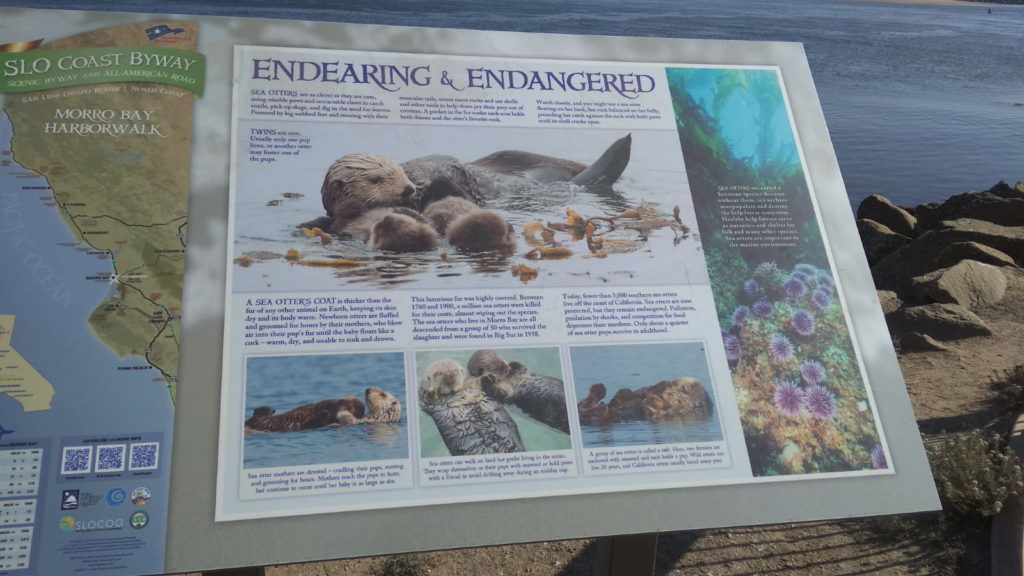
The true beauty of Morro Bay revealed itself when we visited the trail and beach near the rock. It was a gorgeous day weather-wise; completely clear with blue sky and a light that enhanced the sea and skyline. The view of the town from the rocky beach was enchanting and there were lots of cute sea otters in the shallow water to admire. It was here that we found out that the rat-like creatures were squirrels because we asked a couple who were busy feeding them at the base of the rock. It was so lovely that we considered staying longer and maybe hiring a car to drive to Los Angeles. Unfortunately, once the weather and other factors had been considered it meant we might get stuck there if we didn’t continue southward the following day. We ended our Morro Bay sojourn with an early dinner in a fish restaurant overlooking the water: chips without the fish for me, washed down with a glass of red wine 😉
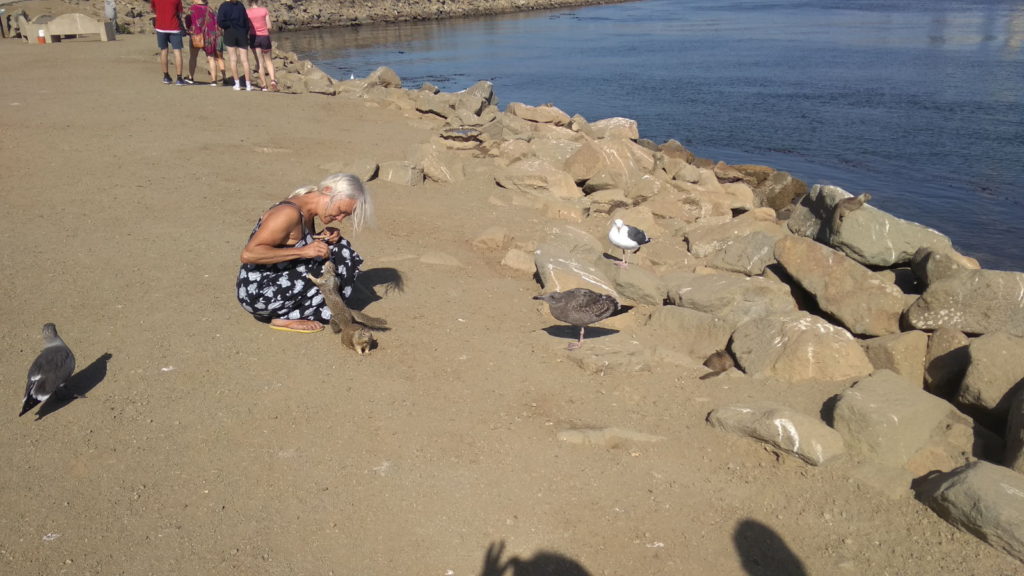
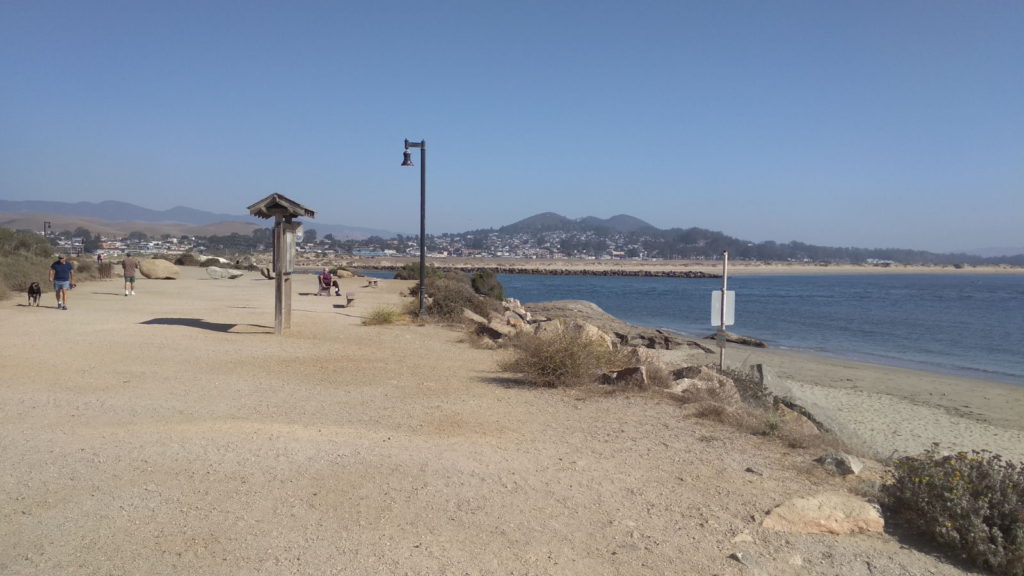
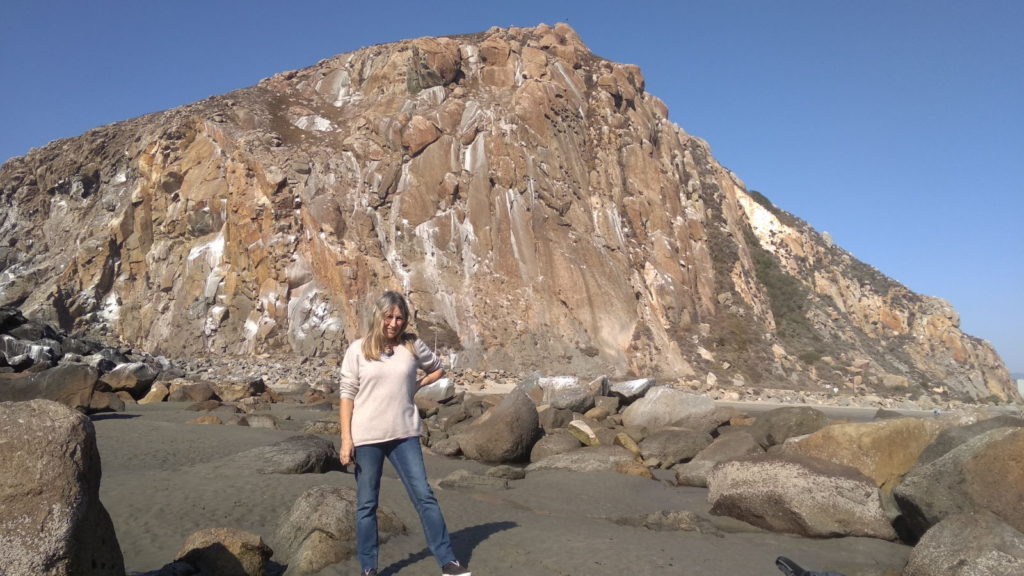
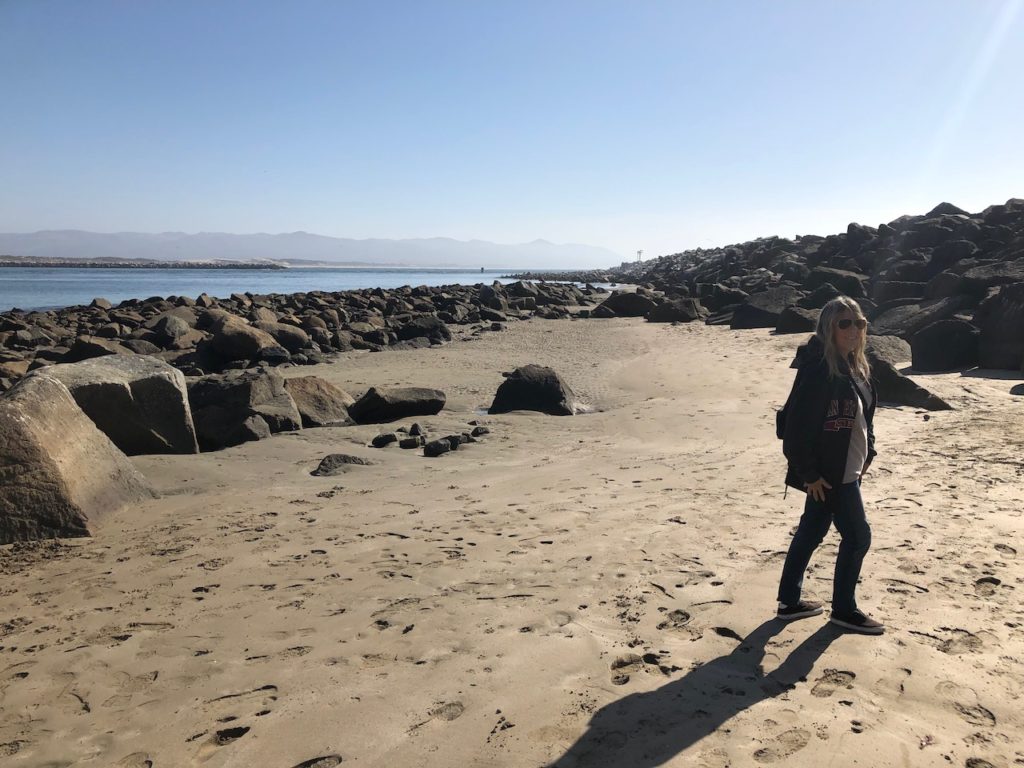
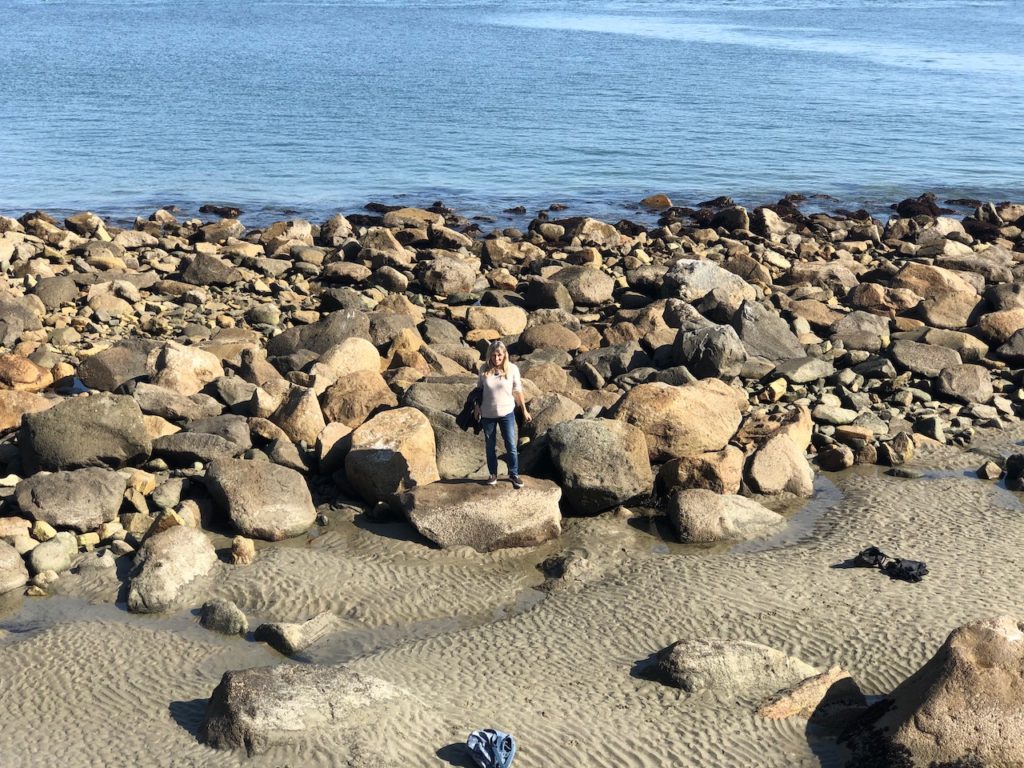
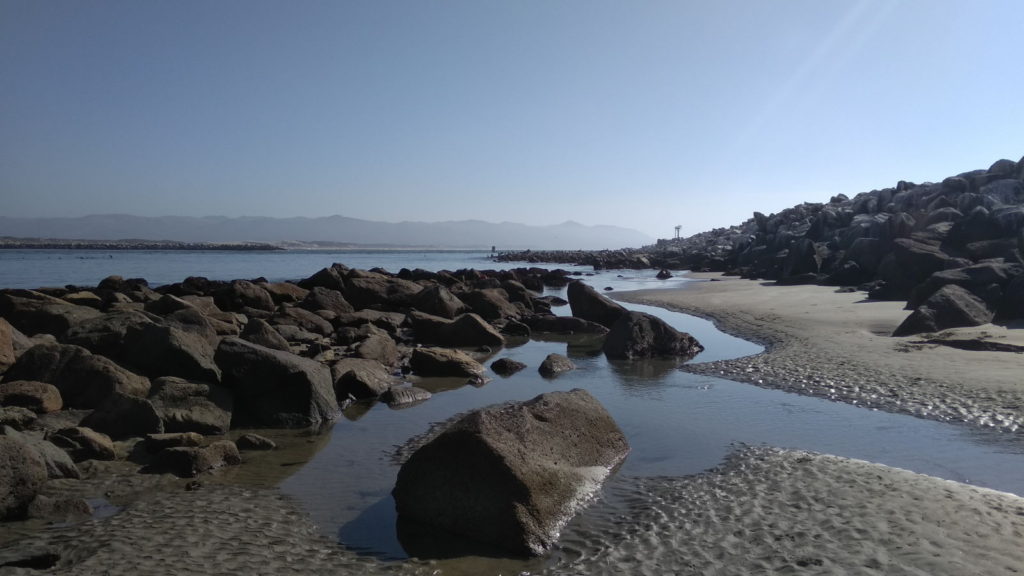
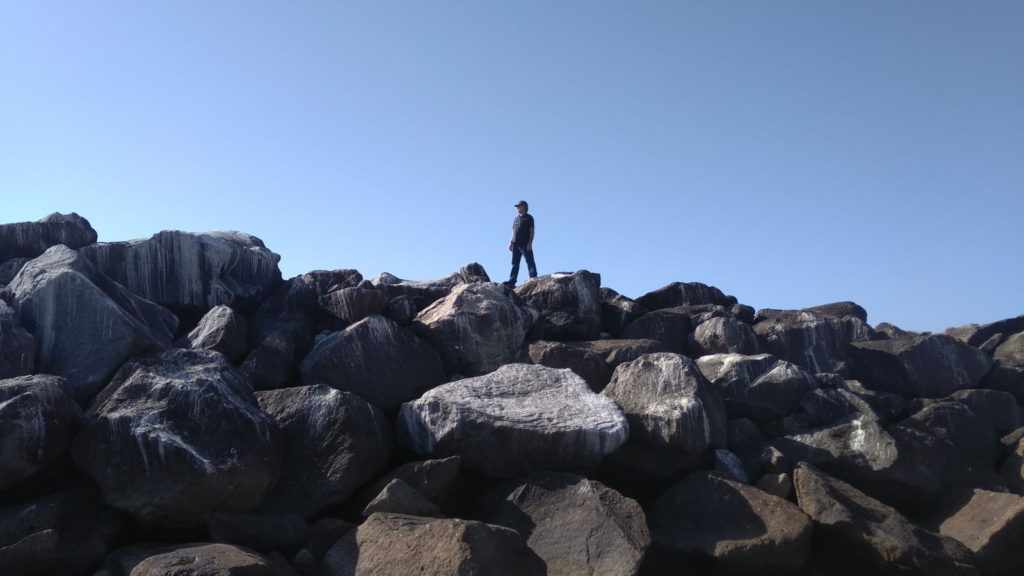
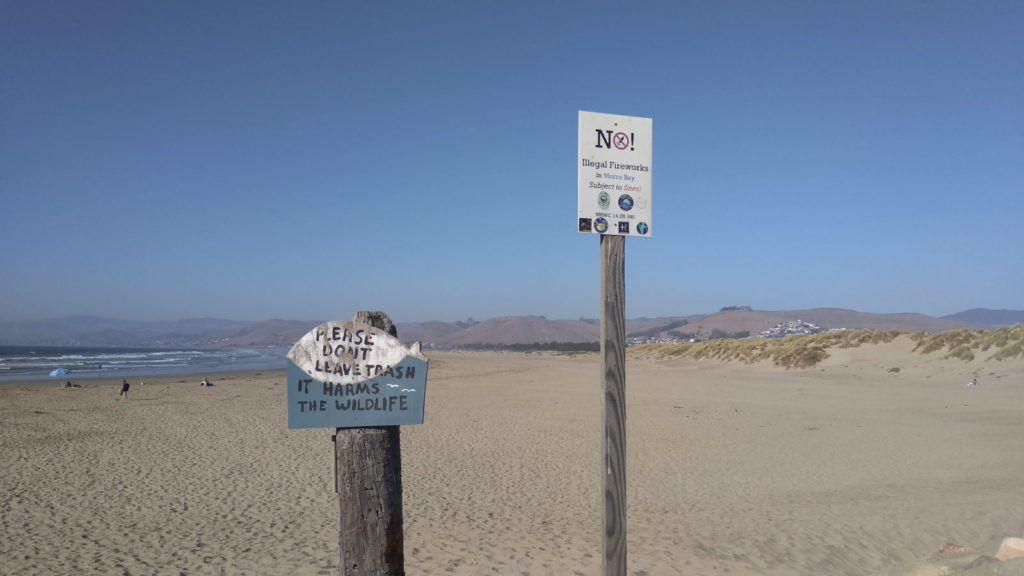
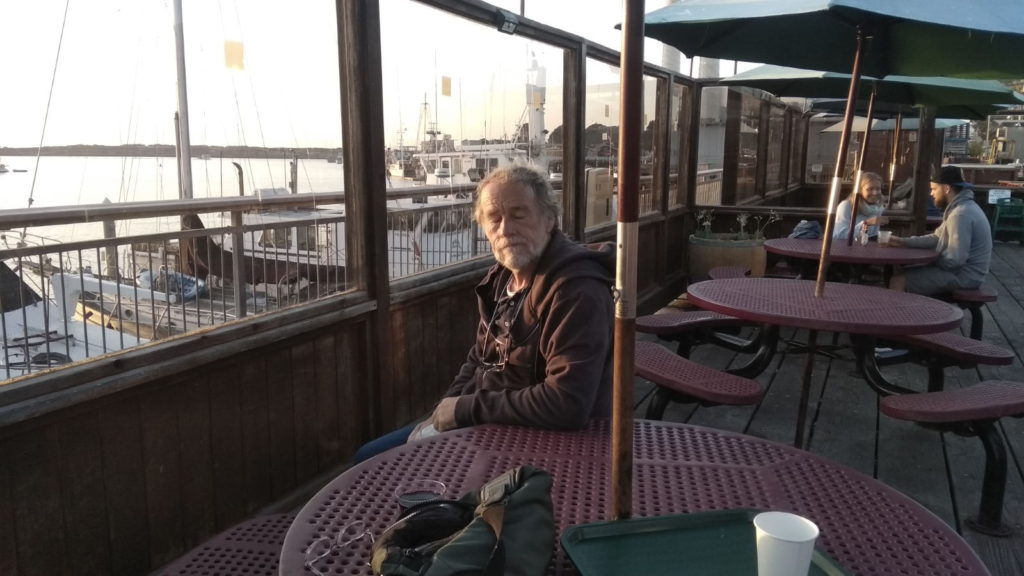
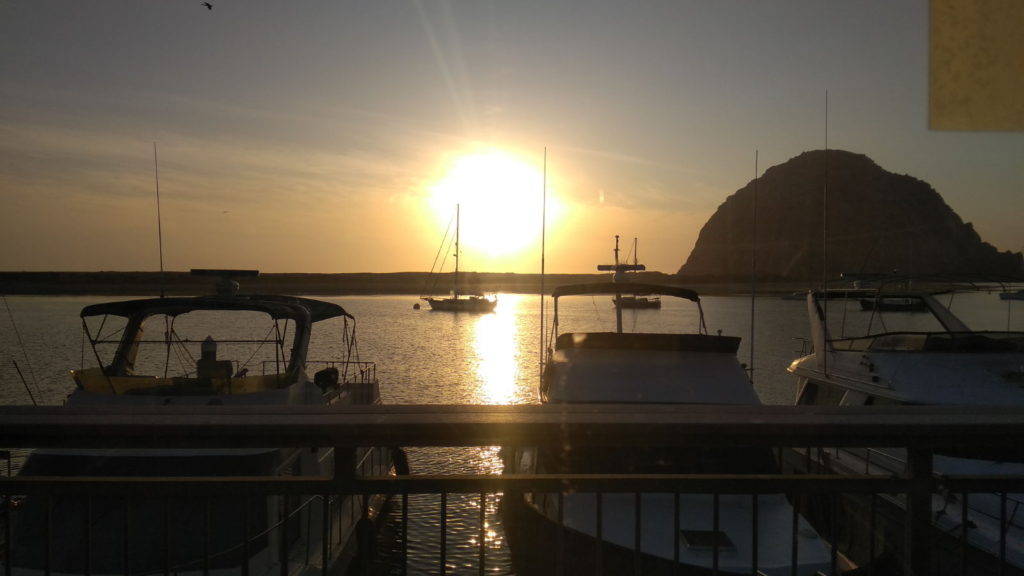
I had plenty of reasons subsequently to wish we had decided to remain there for longer. Our overnight journey to Oxnard near Los Angeles would be anything but plain sailing…
